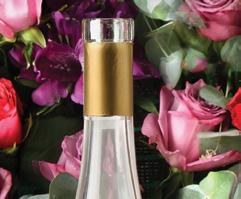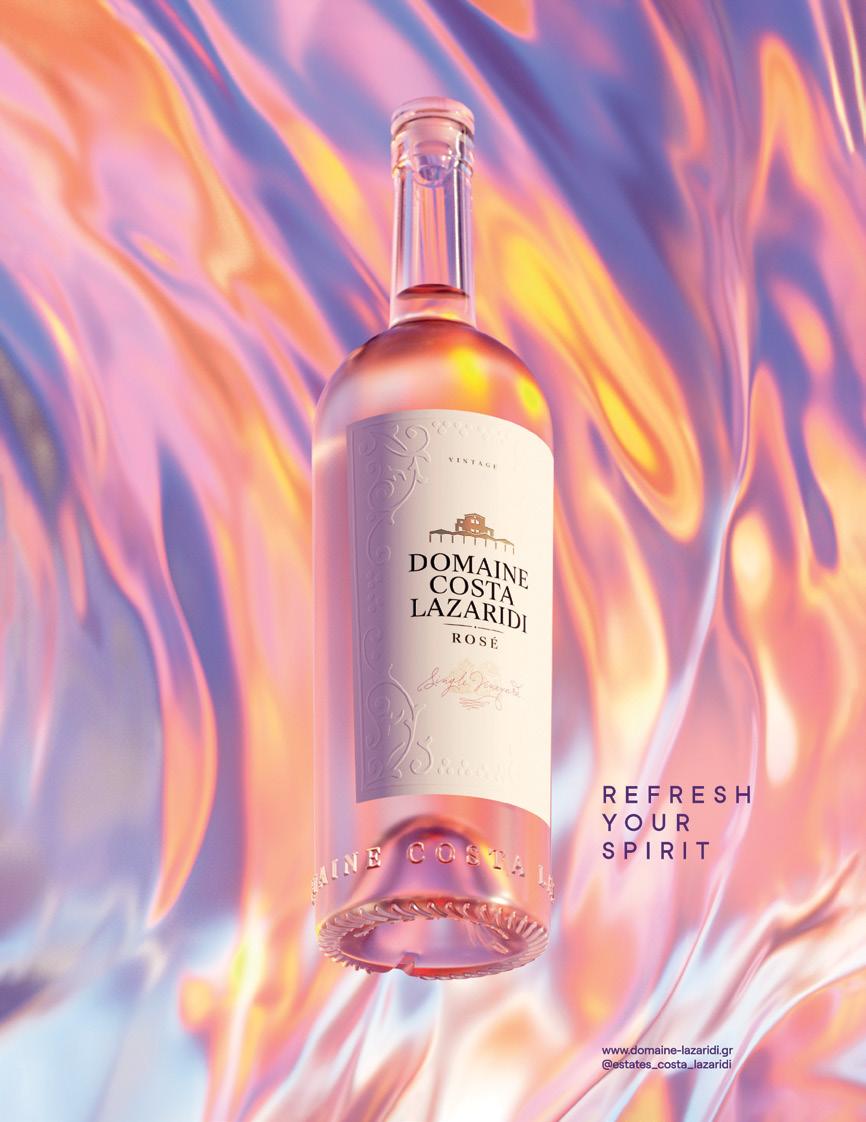DISCOVERING THE UNIQUENESS EXCELLENCE QUALITY OF GREEK WINE WINE TOUR IN GREECE

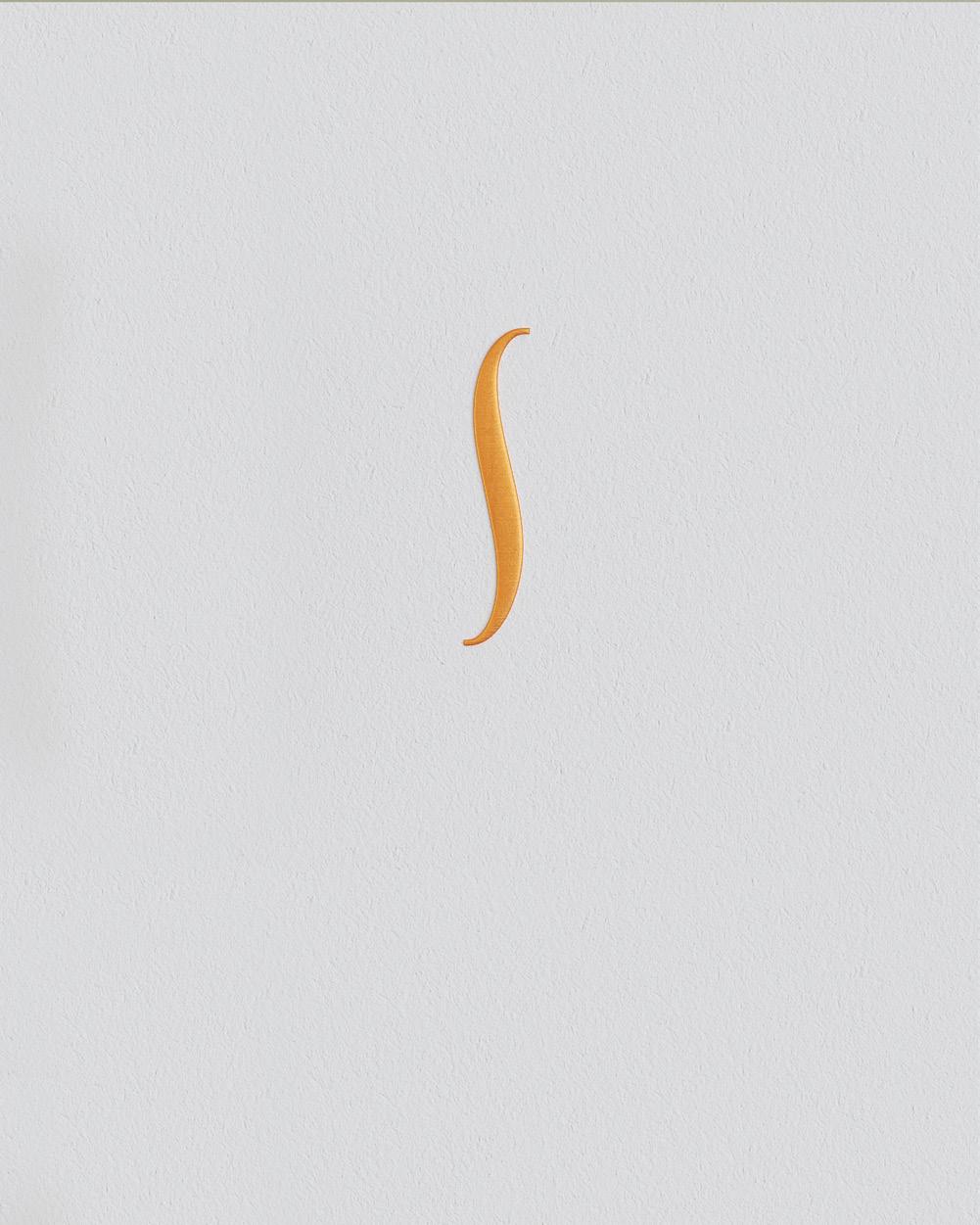



















Wine tour in Greece
A summer in Greece means a true blessing from God.
A summer in Greece is breath-taking coastlines and marvellous seas. Running down a pine-covered hill in midday. The sea being so close, you can breathe the salt and the spray of the waves.
A summer in Greece is the sun and the heat.
Endless days at the company of seagulls circling soundlessly over the ever-rocking Aegean blue. Nights under a maddening sky, lit by thousands of shooting stars.
A summer in Greece is great gastronomy, wonderful dishes in splendid simplicity next to wines. Refreshing white and rosé wines, exciting reds, unbeatable sparkling and unforgettable sweet wines.

Dear readers,
This issue of the Wine Plus magazine is a tribute to our great love for Greek wines.
With an unlimited zest for wine revelations we are going to take you on an trip into Greek Wine World.
We will steer ourselves through the vineyards. We will visit wineries. Lots of wineries!
We will taste wines which make us dream!
We will collect first-hand information about anything that is new, the present and future of the main viticultural zones.
We will enjoy local gourmet products.
Are you ready?
True happiness is closer than you think! All you have to ask yourself is: which is the next wine to taste?
Enjoy!
Μaria Netsika
WINE PLUS MAGAZINE
No 69 SUMMER 2025 Free press Publisher WINE PLUS M. NETSIKA & CO 5 Kariotaki St., 546 45 Thessaloniki T: + 30 2310 888311
e-mail: info@wineplus.gr www.wineplus.gr
Editor Maria Netsika Translation Yiannis Parassiris Metaphrastic - Boutique Language Services
#MapofFlavours2025 #Hartis2025
22nd edition

Wine
• Indigenous grape varieties
• Unique personality of the vineyards and their products
• Wine producers with know-how
• Entrepreneurs with vision and creativity
P.D.O. ZITSA
P.D.O. AMYNDEON
P.D.O. GOUMENISSA
P.D.O. NAOUSSA
P.D.O. SLOPES OF MELITON
P.D.O. LEMNOS
P.D.O. MUSCAT OF LEMNOS
P.D.O. RAPSANI
P.D.O. MESSENICOLA
P.D.O. ANCHIALOS
P.D.O. ROBOLA
P.D.O. MAVRODAPHNE OF CEPHALONIA
P.D.O. MUSCAT OF CEPHALONIA
P.D.O. PATRAS
P.D.O. MAVRODAPHNE OF PATRAS
P.D.O. MUSCAT OF PATRAS
P.D.O. MUSCAT OF RIO PATRAS
P.D.O. MANTINIA
P.D.O. ΝΕΜΕΑ
P.D.O. MONEMVASSIA – MALVASIA
P.D.O. PEZA
P.D.O. DAPHNES
P.D.O. ARCHANES
P.D.O. CANDIA
P.D.O. HANDAKAS CANDIA
P.D.O. MALVASIA PAROS
P.D.O. PAROS
P.D.O. SANTORINI
P.D.O. MUSCAT OF RHODES
P.D.O. RHODES
P.D.O. SITIA
P.D.O. MALVASIA SITIA
with a Protected Geographical Origin / Indication
Olive oils
18 P.G.O.
Viannos, Heraklion, Crete
Ligourio Asklipiou, Argolida, Peloponnese
North Mylopotamos, Rethymnon, Crete
Krokees, Laconia, Peloponnese
Petrina, Laconia, Peloponnese
Kranidi, Argolida, Peloponnese
Peza, Heraklion, Crete
Acharnes, Heraklion, Crete
Kalamata, Peloponnese
Kolimvari, Chania, Crete
Sitia, Lasithi, Crete
Apokorontas, Chania, Crete
Extra virgin oil Thrapsano, Heraklion, Crete
Finiki, Laconia, Peloponnese
Extra virgin oil Trizinia, Attica
Extra virgin oil Selino, Chania, Crete
Agoureleo, Halkidiki
Messara, Heraklion, Crete
11 P.G.I.
Laconia, Peloponnese
Chania, Crete
Cephalonia
Olympia, Peloponnese
Lesvos or Mytilene
Preveza
Rhodes
Thassos
Samos
Zakynthos
Saint Matheos, Corfu
Olives
8 P.G.O.
Kalamata olives, Peloponnsese
Konservolia Amfissa, Central Greece
Konservolia Atalanti, Central Greece
Konservolia Rovies, Euboea, Central Greece
Konservolia Stylida, Central Greece
Throumpa, Thassos
Throumpa, Chios
Halkidiki green olives
3 P.G.I.
Konservolia Arta, Epirus
Throumpa Ambadia, Rethymnon, Crete
Konservolia Pelion, Volos
6 Soft cheeses (mixed milk: sheep/goat)
Anevato of Grevena
Galotyri of Epirus
Pichtogalo of Chania, Crete
Katiki of Domokos, Fthiotida
Kopanisti of Cyclades
Xynomyzithra of Crete
4 Brine cheeses
Feta of Macedonia, Thrace, Epirus, Thessaly, Central Greece, Peloponnese and Lesvos (mixed milk: sheep/goat)
Kalathaki of Limnos (sheep’s milk)
Sfela of Messinia, Laconia (mixed milk: sheep/goat)
Batzos of Macedonia, Thessaly (mixed milk: sheep/ goat)
11 Hard Cheeses
Graviera of Naxos (cow’s milk)
San Michali of Syros (cow’s milk)
Graviera of Grete (sheep’s milk may include some goat’s milk)
Kasseri of Macedonia, Thessaly, Xanthi, Lesvos (sheep’s milk)
Formaella of Arachova, Parnassos (sheep’s milk)
Metsovone, Metsovo (mixed milk: cow/sheep)
Graviera of Agrafa, Karditsa (mixed milk: cow/ sheep)
Kefalograviera, Macedonia, Epirus, AetoliaAcarnania, Evrytania (mixed milk: sheep/goat)
Ladotyri of Mytilene (mixed milk: sheep/goat)
Manouri of Macedonia, Thessaly (mixed milk: sheep/goat)
Xygalo of Sitia, Crete (mixed milk: sheep/goat)
11 Fruits
Kiwi of Pieria
Kiwi of Spercheios, Central Greece
Crunchy cherries of Rodochori, Naoussa
Peaches of Naoussa
Apples Delicious Pilafa of Tripoli, Peloponnese
Koum Kouat of Corfu
Apples of Zagora, Pelion
Oranges of Chania, Crete
Apples of Kastoria
Firiki of Pelion
Mandarin orange of Chios
4 Vegetables
Tsakoniki Eggplant of Leonidio, Peloponnese
Potatoes of Kato Nevrokopi
Potatoes of Naxos
Tomataki of Santorini (cherry tomato)
7 Pulses
Giant Elephant Beans of Kato Nevrokopi, Drama
Beans of Kato Nevrokopi, Drama
Giant Elephant Beans of Prespes, Florina
Beans of Prespes, Florina
Giant Elephant Beans of Kastoria
Fava of Santorini
Beans of Feneos
9 Nuts/raisins/dried figs
Pistachios of Fthiotida
Pistachios of Megara
Pistachios of Aegina
Vostitsa Raisins of Corinth, Peloponnese
Raisins of Zakynthos
Raisins of Ilia
Figs of Vravrona, Attica
Dried figs of Kymi, Euboia
Dried Figs of Taxiarchis, Halkidiki
9 Other Products
Avgotaracho of Messolongi
Cretan Rusks
Honey of Mainalo, Arcadia, Peloponnese
Gum of Chios
Mastic of Chios
Mastic Oil of Chios
Greek Saffron of Kozani
Baby lamb of Elassona
Baby goat of Elassona
White and Pink skinned
Aidani (a-ee-THA-nee): Α white grape with floral aromas grown mainly on the Cyclades islands. It is rarely bottled as a single varietal wine, as it is usually found in the PDO Santorini blend, dry and sweet (Vinsanto).
Assyrtiko (a-SEAR-tee-ko): A startling Greek white grape, Assyrtiko is the dominant grape of Santorini that has successfully migrated to Halkidiki, Epanomi, Drama, Mount Pangeon, in Macedonia and the Peloponnese. It maintains a high acidity even in fully ripeness. With crispy acidity and excellent minerality, its wines are rich and refreshing. The aromas suggest citrus, lemon blossom, orange zest and grapefruit.
Athiri (a-THEE-ree): This is another white grape, common to the islands of the southern Aegean and Halkidiki, in eastern Macedonia. Its wines have lovely floral aromas and a good mouth-watering attack that wakes up the palate.
Dafni (tha-FNEE): Α white grape, one of the ancient indigenous varieties of Crete, it stands out for its aroma of daphne (laurel), hence its name.
Debina (de-BEE-na): A white variety from Epirus whose wines place emphasis on the fruit. They are noted for their refreshing acidity and for the aroma’s finesse, which is reminiscent of green apple and pear. Debina offers a high potential for the production of effervescent wines.
Katsano (ka-tsa-NO): At the end of the 19th century, more than 50 grape varieties were cultivated in Santorini. Nowadays, it is hardly 5 of them which are considered significant. Among those is the Katsano.
Kidonitsa (kee-tho-NEE-tsa): One of the rarest varieties of Laconia, Peloponnese along with Monemvasia (mo-ne-mvasee-A), Petrouliano (pe-troo-lee-a-NO) and Thrapsa (th-r-A-psa). Its trademark is the persistent aroma of sweet quince.
Lagorthi (la-GKO-r-thee): A grape with remarkable fruit and vivid acidity, grown in Northern Peloponnese and the Ionian islands.
Malagousia (ma-la-ghoo-zee-A): This fine white Greek variety was saved from oblivion thanks to the acumen of several Greek producers who believed in its potential. Critical praise and consumer excitement have proven them right. Malagousia wines have strong fragrance, complexity and verve... haven’t I forgotten anything? Long, slightly peppery finish. Another Greek wine to try when you want to branch out and experiment.
Monemvasia (mo-ne-mva-ssee-A): A white grape with elegant aromas and flavours, grown in Paros and Laconia.
Moschofilero (mos-ko-FEE-lai-ro): This variety is known as a blanc de gris, meaning that its skin colour can range from light pink to deep purple. It is cultivated on the plateau of Mantinia and in the southern Peloponnese. Moschofilero produces wines with notes of rose, mint, and lemon.
Muscat: A large and famous family of grapes that is cultivated under various names in almost every single wine-producing country. Equally expansive is the variety of its wines that range from aged sweets to fresh, fruity effervescents, all of which are notable for their fine and impressive aromas. In Samos the White Muscat gives pretty fruity, sunny and charming sweat wines. Appealing, brilliant deep straw in colour. Fragrant with honey, apple and pear. Superb full-bodied, dense and concentrated. You haven’t lived if you haven’t tried a Samos Muscat wine. It’s the ultimate after-dinner as-the-sunis-setting-sitting-by-the-sea wine.
Robola (ro-BO-la): This white grape, cultivated on the Ionian island of Cephalonia, is one of the most elegant Greek varieties. Its wines are fresh, with sunny notes of lemon.
Roditis (ro-THEE-tees): Wines from this pink skinned variety are made throughout almost all of Greece, but with best results near Patras in the western Peloponnese, in parts of Macedonia, and in Thessaly. When its yields are controlled and it is carefully vinified, Roditis gives us light and inviting wines that exude the freshness of citrus, apple and pear.
Savatiano (sa-va-tee-a-NO): The most ubiquitous grape, Savatiano is found in Attica and throughout the whole of central Greece. Along with Roditis, it is the main grape used for the production of Retsina.
Sideritis (see-the-REE-tees): A grape with rosy skin and an appetizing acidity. Grown all over the Peloponnese, especially in Corinthia, Achaia, Ilia and sporadically in Attica and Evia.
Vidiano (vee-thee-a-NO): Another one of the ancient white varieties of Crete, destined to be the new star of the island’s wine production. When it is grown on cool vineyards of high altitude, it presents an intense, fruity aroma and agreeable freshness that brings balance to the full mouth.
Vilana (vee-LA-na): An old Cretan variety, Vilana is a sensitive white grape which, when cultivated with care to produce modest yields, offers pleasant wines with flowery and fruity aromas.
Red skinned
Agiorgitiko (a-gee-or-GHEE-tee-ko): The king of red grapes in the Peloponnese, gorgeous Agiorgitiko is cultivated in Nemea. Its wines, dark, deep, rich and ripe are crowd pleasers. Deep red in colour with loads of cassis and blackberry flavour. Rich, mature, velvety taste and luscious texture. The supple young version is fruit-forward and will reward early enjoyment. However, there is enough big structure to support long-term cellaring (5-10 years).
Avgoustiatis (av-goo-s-tee-A-tees): A red, extremely rare grape, grown in Western Peloponnese and the Ionian islands. Its wines, usually blended with Greek or international varieties have a vibrant, dark colour and respond greatly to aging in barrels.
Kotsifali (ko-tsee-FA-lee): A red Cretan grape, Kotsifali produces wines that are wonderfully juicy with bright red plums and a good grip on the palate. It is usually blended with another island red grape, Mantilaria.
Krassato (kra-SSA-to): A red grape which is part of the PDO wine of Rapsani and is found exclusively there.
Liatiko (Lee-A-tee-ko): An exclusively Cretan grape, Liatiko is considered one of the oldest Greek varieties. It matures in July, hence its name, which is a transliteration of “Juliatiko.” Liatiko is a variety with high alcohol potential that best demonstrates its qualities when sufficiently ripe.
Limnio (lee-mnee-O): Limnio is an ancient red grape varietal native to the island of Lemnos. It was mentioned by Aristotle and other ancient writers. Today it is cultivated not only in Lemnos, but also in Halkidiki, and Northern Greece, where it produces lovely, silky red with the exotic perfume of wet violets and cherries.
Limniona (lee-mnee-O-na): One of the rarest varieties of Thessaly. Its trademark is its herbal/fruity character.
Mantilaria (man-dee-la-ree-A): This red Aegean variety flourishes on the islands of Paros, Rhodes and Crete. It has an unruly character and is usually blended with other Greek varietals that soften its rougher qualities and add fine notes to its clearly earthy tones. Mantilaria is blended with Monemvasia in Paros, and Kotsifali in Crete.
Mavrodaphne (ma-vro-THA-fnee): This familiar aromatic grape is usually cultivated in the vineyards of Patras and Cephalonia. Most of its yield is used to produce the strong, sweet, high-grade, aged red wine that bears the same name.
Mavro Kalavritino (mA-vro ka-la-vree-tee-NO): An Achaia red variety giving wines of medium colour and plenty of tannins, good body and fresh aromas of black and red fruit, as well as of spices.
Mavro Messenikola (mA-vro me-sse-nee-KO-la): It is grown in the area of Lake Plastira, in Thessaly. The wines present medium colour, as well as medium body and modest tannins.
Mavrotragano (ma-vro-TRA-ga-no): A red suggestion from Santorini. This is just one of the many unknown grapes of the
Cyclades islands. It was managed to be rescued – to the enjoyment of wine lovers – through the winemakers’ efforts. A wine with character and intensity, traits of any other product that comes from this beloved island.
Mavroudi (ma-VROO-thee): By the name Mavroudi we find grapes in Rodopi, Thrace and South Peloponnese. Their common trait is the deep red/black colour of their skin.
Mouchtaro (mOO-hta-ro): This rare grape found in Viotia, Central Greece was revived thanks to the efforts of the area’s winemakers. The high acidity and the aromas of red fruits and herbs are the main features of its wines.
Mpekiari (be-kee-A-ree): A red grape grown in Ioannina, Epirus. It is usually blended with Vlahiko, offering colour and tannins.
Negoska (ne-GO-ska): This red grape is exclusively grown in Goumenissa, Central Macedonia next to Xinomavro (ksee-NO-mavro). It is blended in the PDO wine of the area, offering colour, fruit, alcoholic title and reducing its acidity.
Pamidi (pa-MEE-thee): A grape with a rosy skin, grown mainly in Thrace and used for the production of rosé wines or part of red blends.
Stavroto (sta-vro-TO): It is a red grape grown exclusively in Rapsani, Thrace and it is blended in the area’s PDO wine.
Vertzami (ver-tza-MEE): A grape with a remarkable colour and fruit, grown in Northern Peloponnese and the Ionian islands.
Vlahiko (vlA-hee-ko): A red grape grown in Ioannina, Epirus. It thrives in cold climates giving wines with a bright red colour, aromatic complexity, high acidity and a medium body that evolves nicely in time.
Voudomato (voo-THO-ma-to): A rare red variety of Santorini. The wines have a bright colour, medium acidity and high alcohol consistency.
Vradiano (vra-thee-a-NO): This rare red grape is found in Mainland Greece and Evia. The wines it produces have a bright colour, medium body and aromatic complexity.
Xinomavro (xee-NO-ma-vro): A red grape, it is the prime variety of Northern Greece and is cultivated widely from the slopes of the central Greek mountains to the ranges of Pindos. It is the grape of PDO Naoussa, Goumenissa, Amyndeon, and Rapsani. Xinomavro has a distinctive, dark-red colour and an acidic taste even when ripe. Its name means “sour black.” When young, Xinomavro wines are unyielding, but they soften with time and age beautifully, acquiring a unique complexity and palate that yields successive waves of cherry-tomato, plums, violets, lilies… -whatever you are looking for, you will probably find it in here eventually. The wines can be a touch tannic but will smooth out with an hour or two of decanting.
Famous dishes pastrima pie (cured beef), pork with pickled vegetables (a traditional dish from Eastern Rumelia), mpampo (a Christmas dish with intestines and ground beef), manti (ravioli filled with ground beef), tanosour (wheat soup from Pontos), hanoum bourek (with cream)
Must buy kavourmas (cured pork), likourinos (smoked fish), tahini from Trace (sesame paste), stragalia (dried and roasted chickpeas), karioka (a chocolate treat), nougat and saragli (rolled baklava), authentic eastern sweets: gkelin bohtsa, seker pare, soutzouk loukoum
Our journey starts from the north-east, from Thrace. Armed with Wine Plus magazine and, of course, with an unlimited desire for wine discoveries, we will visit the most important wine-producing areas of the region. Our goal is to get to know their wines.
Protected Geographical Indication (PGI): Thrace, Evros, Ismaros, Avdira
Grape varieties
White: Assyrtiko, Malagousia, Zoumiatiko, Sauvignon Blanc (SB), Chardonnay, Muscat of Alexandria, Viognier
Pink-skinned: Pamidi, Roditis
Red: Limnio, Mavroudi, Cabernet Sauvignon (CS), Grenache Rouge, Merlot, Syrah, Cinsault
Wine production in Thrace dates back to ancient times. During the Late Bronze Age, at the coastline of the city Ismaros, the inhabitants called Kikones, used to make the Maronian wine which was an aromatic, sweet like honey wine whose colour was red like a flame. This wine was offered as a gift to Odysseus by Maron, the priest of the god Apollo. This was also the wine which the hero of Homer later used to get Polifimos drunk in order to rescue his companions from the cave of Cyclops.
In ancient years, in the great city of Avdira, hometown of Democritos and Protagoras, vineyards were diligently grown. The wine from Avdira was among the leading wines of the Byzantine Empire.
In modern times, however, there has been a shift towards other, more profitable kinds of crops, such as tobacco, leading to the shrinking and eventual abandonment of vineyards. Contemporary viticultural and winemaking activity in Thrace begun towards the end of the 20th century.
Nowadays, the basic viticultural areas are Avdira, Maronia and Soufli. Many grape varieties are grown, Greek and international.
Winemakers are also displaying an interest in local varieties like the rare white Zoumiatiko, the red Mavroudi, which produces deep-coloured, intense wines, and the reddish Pamidi, which either alone or blended with other, is mainly used for the production of rosé wines.
Take the long way around, choose the path few would take, where time is savoured not spent. Only cut the corners that should be cut, because time flies fast enough. Capture all it has to giv e Just like us, masters of our winemaking craft, waste it not. Because time brings the finest to light, in the purpose-built cellars of our private vineyard and winery, where our estate wines mature. No leaf has been left unturned, no labour spared, no moment rushed. As guardians of an ancient winegrowing land , at Ktima Biblia Chora , we make expressive wine s that celebrate tradition a s much as ex cel len c e

Our wines are for you to appraise, not by length of time but by the memorable quality they impart - time and again.
Kavala
Kavala is one of the biggest fishing centres in Greece, where the fresh fish and seafood reign. The cuisine is a combination of local Macedonian recipes with influences from the cuisine of the refugees from Pontos, Asia Minor and Cappadocia.
Famous dishes
sun-dried mackerel, baked sardines, smoked herring, anchovies in vine leaves, stuffed eggplants
Must buy
PDO Throuba olives, salted fish, kourabiedes from Nea Karvali (Greek almond snow balls), walnut spoon sweet (preserve) from Thassos island
Drama
A sanctuary of worship of the Greek god of wine Dionysus was discovered in Kali Vrisi, Drama, chronologically belonging to the end of the 4th with the beginning of the 3rd century BC.
Famous dishes
itsli kiofte (balls of bulgur stuffed with lamb ground meat), hounkiar mpeyendi (a beef casserole served with eggplant purée), gioulbasi (pork meat baked in baking paper with vegetables and potatoes), trout
We are entering Macedonia. The geographical zone stretches from the borders with Thrace in the east to the Pindos mountain range in the west. It is the largest and northernmost geographical and administrative region of Greece. It is divided into three geographical parts: east, central and west Macedonia.
As consistent wine-loving travellers, we know well that it is also a large and extremely interesting wine region. That’s why we are eager to find the large as well as the small -more or less knownislands of wine production that await us, scattered throughout its countryside, on mountain slopes and sunny coasts.
Protected Geographical Indication (PGI): Macedonia, Kavala, Pangeon, Thassos, Drama, Adriani, Agora, Serres
Grape varieties
White: SB, Assyrtiko, Malagousia, Chardonnay, Sémillon, Trebbiano, Viognier
Pink-skinned: Roditis, Gewürztraminer
Red: CS, Merlot, Syrah, Cabernet Franc (CF), Agiorgitiko
Vineyards in the shade of the “golden” Pangeon Mountain
The vineyard area in Kavala is quite large, close to 3.350 ha. However, the largest part of it (2.690 ha) is cultivated with table and dual usage varieties. These delicious and healthy grapes, mostly Rozaki, are enjoyed not only domestically but also abroad.
Since the mid 90’s, the surface of wine producing vineyards has increased significantly, especially in the foothills of Pangeon Mountain, which protects the area from chilly northern winds while at the same time forms a heat provider in the sites facing the sea. The careful winegrowing practices of the vintners of an area long known for the excellence of its table grapes aid the growth of the vines and quality of their products.
Today Kavala is known for white aromatic wines, with an especially fruity character, good acidity, freshness and structure. The red wines, rich, fruity and exuberant remind us of the new World ones.
Must buy
PDO Potatoes, PDO “Giant Elephant” Beans (Gigantes) and PDO Beans of Kato Nevrokopi, pastourma (highly seasoned air-dried cured beef), sausages, pastrami (meat that has been brined, dried and seasoned), halva from Kirgia (a sesamepaste dense confectionery), dogwood paste (from the fruit of the dogwood tree), pies from the Productive Cooperative of Women Kokkinogia
Must attend
Babougera | An ancient customary celebration of the Greek god of wine, Dionysus, @Kali Vrisi, Drama - Beginning of January
Dramoinognosia (wine tastings in Drama) | Events to promote the Prefecture of Drama as an attractive tourist destination for wine and flavours - May
Halkidiki
In ancient Halkidiki, the cities which were famous for their wines were Mendi (a city in the south-western of the Kassandra peninsula), Akanthos (known today as Ierissos) and Afitis (known today as Afitos). Stagira, the birthplace of Aristotle, was the city where he planted the first model vineyard.
Famous dishes
chicken with green olives, mussels from Olympiada
Must buy
PDO: Agourelaio (Early Harvest Olive Oil) of Halkidiki | Green Olives of Halkidiki | dried figs of Taxiarchis
PGI: Olive Oil of Galano
Metaggitsi Halkidiki
Mountovina tsipouro (a distillate made from honey), mushrooms, chestnuts, potatoes from Holomontas mountain, mparmpounofasoula (beans) from Neochori
DRAMA
A cosmopolitan approach to wine
One can find the vineyards of this viticultural zone along the valley and the low hills in the eastern part of the city of Drama and the foothills of Menikio Mountain, in clay soils.
The zone boasts a small army of major and pioneering producers, dedicated to good quality, who have created some of the most interesting Greek wines. Their activity is expressed in three dimensions: privately owned vineyards, beautiful wineries which can be visited, and exceptional wines with great personality. ‘Modern’ wines, with a clean nose, balanced mouth and, in general, all those characteristics that denote the sense of quality.
Also Drama is the Greek winemaking area where contemporary marketing approaches were applied to help create big brand names for its wines.
PDO: Slopes of Meliton (1982) white/red – dry Goumenissa (1979) red dry Naoussa (1972), red/dry/semi-dry/semi-sweet
PGI: Macedonia, Halkidiki, Sithonia, Mount Athos (Agio Oros), Thessaloniki, Epanomi, Nea Messimvria, Slopes of Vertiskos, Slopes of Paiko, Imathia
Grape varieties
White: Athiri, Assyrtiko, Malagousia, Muscat of Alexandria, Chardonnay, SB, Viognier, Prekniariko (Preknadi)
Pink-skinned: Roditis
Red: Xinomavro, Limnio, Negoska, CS, CF, Syrah, Merlot, Grenache Rouge
A gifted vineyard
Halkidiki is one of Greece’s most distinguished landscapes: three finger-like peninsulas extending into the Aegean sea. The climate is considered ideal for viticulture. Most vineyards lie on relatively high altitude in mountainous Halkidiki, in Sithonia and Mount Athos.
In the early 1970s, on the sun-drenched western slopes of the Mount Meliton, with the guidance of the great French oenologist Emile Peynaud, the largest experimental vineyard of Greek and foreign varieties ever known to Greece was planted. On these slopes, at an altitude of 800 meters, PDO Slopes of Meliton wines -white and red- are produced. PDO Slopes of Meliton is the first Protected Designation of Origin that included international grapes in its varietal composition. Also, it is one of the few Greek PDO zones able to produce both red and white wines.
Thessaloniki
Thessaloniki is known for its gastronomy. The cuisine incorporates the culinary tradition with refugees’ resourcefulness, the Eastern exotic elements with Western conformity.
Must buy
PDO Kasseri of Sohos (cheese), sesame seed bagels (the famous “koulouri” of Thessaloniki), bougatsa with crème (sweet custard pie with phyllo), trigona of Panorama (cream-filled phyllo cones), yoghurt from Dorkada
Must attend
Map of Flavours | Northern Greece biggest wine event @Thessaloniki – December Rosé Grand Tasting | Northern Greece biggest Rosé wine tasting @Thessaloniki – May Carnival @Sohos – FebruaryMarch
Cherry festival @Ossa - June
Goumenissa
Must buy
local cheeses: parharotyri (a smoked cheese from Pontos), sirna (goat’s cheese from Griva), siron (a dried dough from Pontos), chestnuts from Mount Paiko
Must attend
The celebration of St. Trifonas (the patron saint of vineyards)February 1st
Naoussa
Must buy
PDO Batzos (salty, hard cheese), peaches of Naoussa, crunchy cherries of Rodohori, revani from Veria (sweet semolina cake)
Must attend
Naoussa City of Wine | Various wine tasting events - September Traditional Carnival | Re-enactment of the ancient custom “Gianitsaroi and Boules” where the locals dress up in scary masks and gowns...
Another major pole of the vineyards of Halkidiki is Mount Athos, the semi-autonomous monastic district. There is a year-long tradition in the art of viticulture and wine production in almost all the Mount Athos monasteries. Nowadays, in quite a few of them, we are experiencing this tradition’s revival with new, linear plantings. Almost all of them are organically farmed. PGI Mount Athos is one of the first Geographical Indications legislated in Greece in 1981.
Wine in multiple facets
Vines have always been cultivated in the prefecture of Thessaloniki, from the plains to the coastlines of Thermaikos Bay, all the way up to the mountains. Although the vineyards were destroyed by phylloxera in the early 20th century, the refugees who arrived in the area after the Asia Minor Catastrophe managed to revive them. In the mid 80’s, when the “small wine producers” started becoming more known, the prefecture of Thessaloniki dynamically entered the quality Greek wine sector, filling our glasses with high quality wines, many of which have become trendsetters.
Among the most beautiful wine sites in Greece
The vineyards of Goumenissa stretch on the south eastern slopes of Mount Paiko and on hills with a slight incline on the south of the city, at an altitude of no more than 250 meters. Here, Xinomavro is grown along with Negoska, a local red grape which comprises 20% of the PDO blend (Xinomavro and Negoska). Goumenissa is known for red wines with finesse and lively colour. They incorporate the soft tannins of Negoska with the fruit and the long, pleasant aftertaste referencing right back to the Xinomavro.
The replanting which has taken place in the zone over the past few years offers great potential for differentiated wines with the participation of international varieties which have adapted successfully.
Complex, vigorous and absolutely fascinating wines from Xinomavro
Naoussa is the most famous wine region in Northern Greece. One of the most important appellation areas of Greek vineyards, where Xinomavro is exclusively used for producing outstanding red dry PDO wines with a fascinating complexity and stamina in time.
Cultivations stretch along the foothills and eastern slopes of Mount Vermio, at altitudes of between 100 and 400 meters and on soil which ranges from acid schistose to high in lime and clay. Due to the climatic conditions prevalent in the area, Xinomavro ripens late, which increases its vulnerability in the cold and rainy years, when the tannic character of the wines becomes more pronounced. The diversity of topography and the soil of the vineyards of Naoussa are key determinants of the quality of the product.
The results of a study aiming to redefine the zone substantiate the presence of 13 sub-zones with uniformity in the soil and climate characteristics. These sub-zones produce wines from Xinomavro with distinctly different personalities.



Amyndeon
Must buy
PDO Giant Elephant beans and Beans of Prespes, Giant Elephant beans of Kastoria, grivadi (Carp, a kind of freshwater fish), salted tsironi (a kind of freshwater fish), naturally sparkling water of Xino Nero, red Florina peppers and ajvar (ground red pepper), paprika from peppers of Aridea
Siatista
Must buy sausages [with bukovo (chili), black pepper, cumin, allspice and paprika]
Velvedos
Must buy
PDO Saffron of Kozani, PDO Manouri of Vlasti, kichia (traditional cheese pies)
PDO: Amyndeon (1972) rosé dry/semi-dry/semi-sweet, rosé sparkling/dry/semi-dry, red dry/semi-dry
PGI: Macedonia, Florina, Siatista, Velvendos
Grape varieties
White: Assyrtiko, Malagousia, Batiki, SB, Chardonnay
Pink-skinned: Roditis, Gewürztraminer
Red: Xinomavro, Moschomavro, Limniona, CS, CF, Syrah, Merlot
The Northernmost vineyards in Greece
Amyndeon, one of the most important viticultural areas in Greece, is the northernmost and coldest viticultural zone of the country. The vineyards are located on the plateau and in the areas Filotas, Aetos, Variko. They lie northwest of Naoussa, between the mountain massifs of Vermio and Voras, while almost 50% of those are found between the lakes of Petres and Vegoritida.
The area’s temperate climate is due to the altitudes, which exceed 500-700 meters in semi-mountainous and mountain terroirs, but also to the presence of four lakes in the area. The poor, sandy-sand and clay soil allows for the efficient drainage of the rain water. Most of the vineyards are linear (Royat training system), in rows and mostly non-irrigated. Since the sandy soil did not favour the spread of phylloxera, one can find vineyards with “own rooted” vines, aging more than 100 years in cup shape (Gobelet system).
Xinomavro is the dominant variety. Amyndeon and Xinomavro as a pair give us delightful PDO red wines with a different character from that of Naoussa. Also, this combination is ideal for the production of still and sparkling PDO rosé wines with an expressive nose, typical of the variety. Most sparkling wines are produced using the closed tank method (cuve close) while only a limited percentage is produced using the traditional method. Due to its temperate and humid climate, the area also offers itself for the cultivation of many foreign cultivars and the production of aromatic white wines with finesse.
Traditional and modern vineyards
Viticulture has been present in Siatista since the 15th century. The majority of the vineyards are at an altitude of 680-850 meters, with the oldest ones still growing on the traditional terraces. Some of the grapes are placed in large crates with screens –they are called “liastres” in order to dry in sheltered and well-ventilated space. From these ‘air-dried’ grapes from mainly Xinomavro and local Moschomavro, the famous “iliasto” sweet wine of Siatista is produced. Pale in colour and high in alcohol with soft tannins.
Vineyards and wineries in Polyfytos lake neighbourhood
The vineyards in Velvendos stretch in the northwest of the town, on a slope with exposure to the northwest and an altitude of 300-370 meters. The climate is continental. However, it is affected in a significant manner by the neighbouring Polyfitos lake and more specifically by the steady presence of winds, who have a cooling effect on the vines during the summer months.
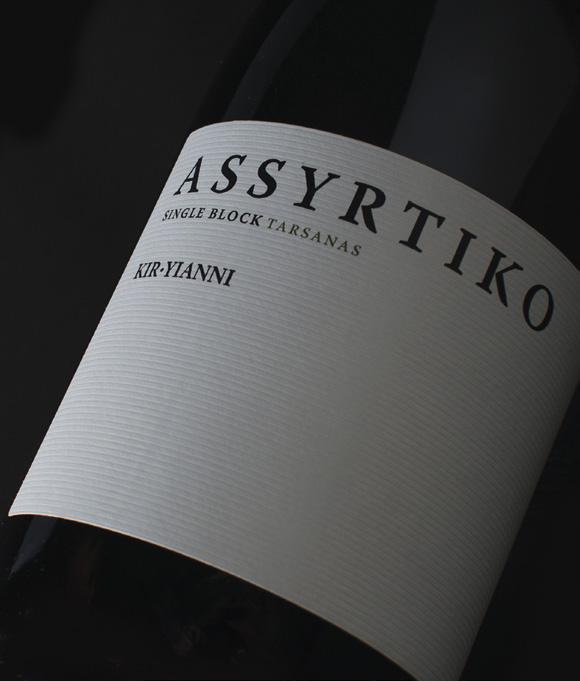

We arrived in Epirus. In Ioannina. The legends of Ali Pasha and Lady Frosyne weigh on the mind like the moisture on the body. The walk on the island and the meal in the neighbourhood of the lake are balm. If some local flavours, such as eels and frogs’ legs, seem to us... difficult, we’ll settle for the lake fish and the goat in the pot. But wine is out of the question. We’ll enjoy the freshness and aromatic finesse of the whites and the mountainous robustness of the reds. Expressive wines from local and international varieties of a unique character.
Zitsa is one of the just three areas in Greece –the other two are Amyndeon (see page 14) and Rhodes (see page 28)–which traditionally produce sparkling wines.
Must buy
PDO Galotyri cheese, PDO Metsovone cheese, Epirus pies, wild mushrooms, kontosouvli (roasted meat), goat cooked in crock pot, goat’s cheese, traditional gianniotiko sweet
PDO: Zitsa (1972) white dry/dry semi-sparkling/dry sparkling/semi-dry semi-sparkling/semi-dry sparkling/semi-sweet sparkling PGI: Epirus, Metsovo white dry/semi-dry/ semi-sweet/sweet/red dry
Grape varieties
White: Debina, Chardonnay
Pink-skinned: Gewürztraminer
Red: CS, CF, Vlahiko, Bekiari, Syrah, Merlot
The average altitude of the vineyards in the Protected Designation of Origin Zitsa zone is 650 meters. Vineyards on the slopes reach up to 800 meters. The annual rain height, the highest in Greece, can easily reach 1.100-1.400 mm. Here, the local Debina white variety occupies about the 95% of the zone’s vineyard, yielding dry and semi-sparkling PDO Zitsa wines. Wines with stylish citrus aroma, amazing acidity and freshness in taste.
As far as red grapes are concerned Vlahiko is probably the most interesting red variety of Epirus.
A few dozen kilometers to the east, in Metsovo, at Giniets, at an altitude of 950-1.000 meters, the highest mountainous vineyard in Greece can be found. Here is where some of the first Cabernet Sauvignon plantations in Greek soil took place.
Must buy Rapsani
PDO Elassona lamb and goat meat, pies from the local cuisine: wild greens pie, pispilita (zuchinni pie) with corn flour, kassata pie with dough
Meteora
the famous Halva from Farsala, spatula (walnut pie with cream and almonds)
Messenikola
PDO Agrafa Graviera cheese
Anchialos
PDO Pilio Konservolia (olives)
We are now heading south, towards Thessaly. We pass Dion, the ancient city with the famous sanctuaries of the Macedonian gods and stop at the traditional settlement of Litochoro. First of all, to enjoy the enchanting route, which climbs up the slopes of Mount Olympus among century-old plane trees, running waters and wild vegetation. But also to enjoy delicious food in the traditional taverns and gastro-restaurants. The wine we will choose comes from the best vineyards grow on mountain slopes on the boundaries of the region, where the grapes are superior in quality to those growing in the heavy and rich in organic matter soils of the Thessaly plain.
PDO: Rapsani (1971) red dry
Messenikola (1994) red dry
Anchialos (1974) white dry
PGI: Thessaly, Krania, Tirnavos, Meteora
Grape varieties
White: Savatiano, Assyrtiko, Malagousia, Debina, Batiki, Chardonnay, SB
Pink-skinned: Roditis
Red: Xinomavro, Stavroto, Krassato, Muscat of Hamburg, Mavro Messenikola, Limniona, Limnio, Vlahiko, CS, Merlot, Syrah, Grenache Rouge, Cinsault, Carignan, Syrah
RAPSANI
Olympian Gods and wines
Rapsani, is the most important appellation of Thessaly. The majority of the zone’s vineyards are planted on the south slopes of Mount Olympus, at an altitude reaching 800 meters. Nearly all the vines are cupshaped and densely planted. In some of the mountainous vineyards, the plant density is 10.000 plants/ ha. Here Xinomavro is jointly cultivated with two other local varietals, Krassato and Stavroto. The three grapes participate in the PDO Rapsani varietal composition in the same percentages as they can be found in the vineyards. Rapsani is known for multi-dimensional red wines with vigour and grace.
PGI Krania: The grapes selected for its varietal composition are solely international: Cabernet Sauvignon, Merlot and Chardonnay. This is the reason why the area was excluded from the PDO Rapsani zone in which it was originally included.
TIRNAVOS
Vineyards, wines and tsipouro
The majority of the Thessaly vineyards are in Tirnavos, with the dominant variety being Muscat Hamburg, grown in 67% of the total vineyard area (covering 100 ha). Considering that the stretch of the Muscat of Hamburg in the whole of Greece does not exceed 160 ha, it is completely justified that the Muscat of Tirnavos was legislated as its synonym.
Tirnavos is famous for the production of tsipouro (traditional Greek distillate) made from Muscat of Hamburg grapes. Muscat of Hamburg also produces light and aromatic wine. Among the rest of the varieties grown in the region, we find the local red Limniona, a rare Greek variety, which managed to survive thanks to the sincere efforts of the winemakers.
Imposant rocks and wine
In northwestern Thessaly, there was a years-long tradition of vine growing in Kalambaka, mainly in the Byzantine monasteries of Meteora and in Kastraki village south of the iconic perpendicular rocks. Monasteries used to hold an extensive vineyards area but the viticulture is somehow limited nowadays.
The establishment of the PGI Meteora in 2006 has contributed to the revival of the area’s vineyards. The new vineyards were planted on slopes at altitudes beginning at 150 meters and reaching all the way up to 800 meters. The soil presents a great variety in its composition due to the rare formation of the rocks. It is the basic component, however, which is schist, which provides for very good drainage. For the varietal composition of the vineyard, Greek and international varieties were selected, giving emphasis on rare indigenous grapes such as Limniona.
One of the youngest and smallest viticultural PDO zones in Greece
PDO Messenikola is one of the youngest and smallest zones in Greece, stretching along the villages of Agrafa, at an altitude of 250-700 meters. Years after the PDO Slopes of Meliton (see p. 11), the PDO Messenicola is the second Greek designation of origin including foreign varieties in its composition: Mavro Messenikola+30% Syrah and Carignan.
South of the city of Volos, on the coastal areas overlooking Pagasitikos Gulf in Magnisia, the most widespread Greek white cultivar, Roditis, is planted in deep, limey-clayey soil. A handful of ha planted with Savatiano complete the vine profile of the vineyards of Anchialos.
We continue our descent to the south. We have now entered Central Greece and we are heading to the eastern regions that receive the Aegean influence, namely Fthiotida, Viotia, Attica and Evia. The rural landscape is a composition of large areas of vineyards and olive groves, under the warm sun. A little further away are the seas, which, surrounding the land, have played an important role in the movements of people, goods and ideas. They were indirectly essential in the development of the glorious civilisation that flourished on this land.
Grown in the very warm and dry climate of Central Greece are the white grapes Savatiano and Roditis for the production of huge quantities of retsina (the first Greek wine with Traditional Designation) and many table wines. Since the late 80’s there has been an effort to plant more grapes, indigenous and international. As the producers paid special attention to the location of the vineyards in order to achieve high quality and low yields, the results were remarkable, the wines “took off”, and dozens of PGI indications were approved.
Must buy
Fthiotida – Viotia
PDO: Arachova Formaela cheese, Atalanti konservolia (olives), Stilida konservolia, Sperchios kiwi, Fthiotida pistachios
Evia
PDO: Rovies konservolia (olives), Kimi dried figs
Lenga Grape Spa--wellness and care products from the ingredients of the vineyards of Avantis Estate (see p. 36)
Attica
PDO: Troizinia extra virgin olive oil, Vravrona Markopoulo Mesogea figs, Megara pistachios
PGI: Atalanti valley, Opountia Lokris, Slopes of Knimida, Parnassos, Martino, Thebes, Slopes of Kitheronas, Evia, Avlida, Lilantio Pedio, Karistos, Ritsona, Attica, Anavissos, Vilitsa, Slopes of Pentelikon, Gerania, Ilion, Koropi, Markopoulo, Paiania, Pallini, Slopes of Kitherona, Slopes of Parnitha, Spata
Grape varieties
White: Savatiano, Assyrtiko, Malagousia, Robola, Aidani, Chardonnay, SB, Viognier
Pink-skinned: Roditis, Gewürztraminer
Red: Agiorgitiko, Vradiano, Liatiko, Limnio, Black Koudoura (Mantilaria), CS, CF, Syrah, Merlot, Limnio, Mouchtaro, Carignan
Grenache Rouge
Vineyards on the mountain slopes and the plains of Central Greece
In Fthiotida, particularly in the plain of Atalanti, wine has been produced since antiquity. The new era for the viticultural in the region started in the early ‘80s. The vineyards are planted on the slopes of the mountains and the plains, where the moderate influence from the sea and the protective mountain column create the perfect terroir for the production of quality grapes. The cultivations include both native and international cultivars. Several varieties have been adapted in the area, Cabernet Sauvignon being perhaps the most important one.
In Viotia, Savatiano and Roditis are cultivated in the fertile soils of Thiva plain, and their yields primarily go toward the production of table wines and Retsina. But also on the cool slopes of the mountains Parnitha and Kitheronas a range of native and foreign cultivars thrive for the production of single varietal or blended wines. The revival of an exceptional red local variety, Mouchtaro, is especially interesting.
Traditional vineyards and modern estates
In Evia, the largest island of Greece after Crete, the vineyards reach altitudes of maximum 350 meters. The area is mostly devoted to white grapes. Savatiano is the dominant grape, covering approximately 4/5 of the total area. In the south part of the island, Greek Aegean sea varieties have been planted, which are used to the winds and the dry and warm climate: Athiri and Mantilaria from Rhodes, Assyrtiko and Aidani from Santorini, and the red Liatiko from Crete. An effort to revive the local red variety Vradiano has begun recently.
Traditional vineyards and modern estates
Viticulture in Attica has been in decline due to the rising urbanization. Nevertheless, 6.250 ha are still cultivated, making it the vastest viticultural region in Greece. The vineyards, mainly in the Mesogia area, together with those of Viotia and Evia, account for most of Retsina production, traditionally from the Savatiano and Roditis varieties. The area also features a number of international grapes.
Over the past few years, a good number of producers in Attica and Central Greece have been introducing the new and contemporary face of Savatiano, the result of significant work in the vineyards and wineries. It is with great pleasure to taste their fresh, easy-drinking wines. The aged ones are unexpectedly fresh with hints of minerality.

4,99€

5,99€
Nemea
Famous dishes mpogana from Argos (lamb with potatoes from Tripoli, tomatoes and spices, slowly cooking in a wood-fired oven), roasted pork or goat
Must buy
PDO Extra virgin olive oil (Lygourio Asklipiou, Kranidi Argolida, Troizinia), PDO artichoke from Iria Asini Nafplio, PGI Feneo fava (split pea puree), PGI Feneo vanilies beans, pomegranate from Ermioni, melon from Argos
Must attend
Great Days of Nemea | Various wine events - September Agrotourism Festival @Ancient Epidavros - July Artichoke Festival @Iria - May
We leave the capital behind and cross the Isthmus of Corinth. We are now in the Peloponnese, the island of the mythical Pelops. They were right to call it an island, because as soon as you cross the isthmus, you have the feeling that you are in a place, with a different ecosystem and vegetation from the Central Greece you just left. With high mountains that divide it into small areas with completely different microclimates.
In the Peloponnese, from 10,800 ha of vineyards, around 1,200,000 hectolitres of wine are produced every year. White, rosé, red, sparkling, sweet... the range is very wide. And the wineries are many. As we wander around the peninsula, every now and then we’ll stop at one and taste their wines.
For the fans of Agiorgitiko and many more!
PDO: Nemea (1971), red dry/semi-sweet/ sweet
PGI: Peloponnese
Grape varieties
White: Malagousia, Chardonnay, Viognier
Red: Agiorgitiko, CS, Syrah
The PDO Nemea wine is produced exclusively from Agiorgitiko -the choicest of red varieties of southern Greece- and the vineyards of Nemea, with 3.000 ha planted with Agiorgitiko, form the largest zone producing PDO wines in Greece.
The Greek Wine Institute conducted a year-long survey of viticultural nature in the area. The results defined three altitude zones:
A: the flatlands around the cities of Nemea and Ancient Nemea which reach the lower slopes at an altitude of 200-350 meters.
B: the semi-mountainous zone on the western-southwestern foothills circling the plain of Nemea, which stretches on the slopes at 350-600 meters. The famous deep coloured wines of Nemea are produced here. C: and the mountainous which reaches up to 600-800 meters comprising the valleys and plateaus at the foot of Mount Kyllini. This zone gives pleasant rosé and fresh red wines.
The zone offers the greatest number (> 100) of Greek PDO labels – at all price levels. Generally, Nemea is known for deep-coloured, juicy, soft and fruity fresh red wines as well as plethoric aged reds with volume, density and noticeable yet soft tannins.
After many years of research, the Nemea Winemakers Association in collaboration with the Institute of Ecological Agriculture, developed a new classification which promote wines from specific cru with the PDO Nemea Lions designation. This is the first attempt in Greece to recognise and promote terroir wines, which also lays the foundations for highlighting the diversity of the zone.



Established in 1979, Semeli Estate has grown into one of Greece’s most acclaimed wineries - a benchmark for highaltitude winemaking and an ambassador for the elegance of Greek terroir. Located in the heart of Nemea, at 600 meters above sea level, the Εstate’s cutting-edge winery is surrounded by 50 acres of private vineyards while an additional 250 acres are cultivated across the prestigious PDO regions of Nemea and Mantinia — two of Greece’s most celebrated appellations.
This unique microclimate and soil composition allow native varieties like Agiorgitiko and Moschofilero to reach their full potential and expression, while international grapes such as Syrah, Merlot, and Cabernet Sauvignon thrive in harmony. The result is wines that balance structure, finesse, and identity.
The Estate’s philosophy is clear: respect the land, innovate constantly, and craft wines that speak for themselves. From vine to bottle, every process is carried out with care, and it shows in every sip. Beyond exceptional wines, Semeli Estate invites guests into a world where craftsmanship meets authentic Greek hospitality - a complete, immersive wine experience.
Through the Semeli Wine Experience, guests are introduced to the Estate’s philosophy and wines through guided tastings, vertical samplings, and behind-the-scenes tours. Whether you’re a first-time visitor or a seasoned enthusiast, you’ll leave with a deeper appreciation for the craft behind each label.
Guests can enjoy private picnics in the vineyards and savor seasonal wine-paired meals at the Estate’s bistrot, where local ingredients meet refined simplicity.
Semeli Estate is also proud to be Greece’s first carbon-neutral winery. With sustainable practices integrated at every level - from organic vineyard management to energy-efficient production and waste management - the Estate leads the way in environmentally responsible winemaking.
For corporate retreats and business gatherings, Semeli Estate offers an inspiring setting that blends tranquility with sophistication. Elegant suites and tailored hospitality create the perfect atmosphere for team building, strategic reflection, and unwinding—surrounded by the calming beauty of the vines. Whether you’re discovering Greek wine for the first time or returning for your favorite vintage, Semeli Estate delivers more than wine - it offers a complete, unforgettable experience.
Where Moschofilero thrives
Mantinia
Famous dishes
lagoto (beef stew in red sauce)
Must buy
PDO Pilafa Tripoli “Delicious” apples, PDO Elati Menalos Vanilia honey, PDO Leonidio Tsakoniki eggplant, PDO Potatoes from Tripoli, garlic from Tripoli, hand-woven textiles from Tsakonia
Must visit Pausanias’ Vinetree @Klitoria Kalavrita. It is considered to be the oldest vine in the world and it is a protected monument of nature.
PDO: Mantinia (1971, 2011) white dry/sparkling
PGI: Peloponnese, Arkadia
Grape varieties
White: Asproudes, Chardonnay
Pink-skinned: Moschofilero
The vineyards of this zone are located in the heart of the Peloponnese, northeast of Tripoli, at an altitude of over 650 meters with poor and well-drained soils. They are surrounded by tall mountains, which influence the region’s climate and distinguish it from the rest of the Peloponnese. Temperatures are lower while rainfall is high. Because of the cool climate, the grapes in Mantinia usually mature in mid October, which is quite late for an area in southern Greece. Harvest is one of the latest in the Peloponnese and, depending on the year, can extend into mid-November.
The dominant variety is Moschofilero, at about 85%, one of the most aromatic varieties in Greece, with a reddish skin. The most important biotypes of Moschofilero are:
• Mavrofilero which gives wines with high alcohol levels and good acidities. This is the reason why it is used as the backbone of the PDO wines.
• Xanthofilero and Asprofilero which give wines with low alcoholic degrees and high acidities. They are mainly used for the production of sparkling wines.
The duet Mantinia/Moschofilero is quite possibly the only “white” in Greece which can give a number of completely different types of wine products: elegant white wines with powerful floral aromas and crisp acidity, light-coloured (Provence type) delicate rosés and scintillating sparkling wines (with PDO indication since 2011).
Nowadays, one can find at least 45 PDO Mantinia labels from 11 wineries within the zone and 20 outside the zone.
GOOD TO KNOW
Achaia
Must buy
PDO Corinthian raisin Vostitsa, honey from Erimanthos and Helmos, tentura (digestif)
Must attend
Oinoxeneia | Various wine events – June-August
A huge vineyard
PDO: Patras (1972) white dry
Mavrodaphne of Patras (1971) red sweet
Muscat of Patras (1971) white sweet
Muscat of Rio Patras (1971) white sweet
PGI: Peloponnese, Achaia, Slopes of Egialia, Slopes of Pertoto
Grape varieties
White: White Muscat, Asproudes, Malagousia, Lagorthi, Volitsa, Athiti, Santameriana, Chardonnay, SB, Riesling
Pink-skinned: Roditis, Sideritis
Red: Mavrodaphne, Mavroudi, Mavro Kalavritino, Aglianico, Avgoustiatis, Korinthiaki, CS, Syrah, Grenache Rouge, Merlot
Achaia is one of the largest viticultural zones of Greece, in terms of volume. The vineyard area is huge for Greek standards considering that it comprises 12% of the total vineyard area of the country. More than 80% is planted with white varieties.
The region was “put on the map” 180 years ago, thanks to the production of the famous sweet fortified wine from the red varietal Mavrodaphne. Today in the sweet PDO Mavrodaphne, Korinthiaki grape can also contribute up to 50%.
The main and basic variety, exclusive to PDO Patra, is pink-skinned Roditis. Having 8 clones, some of which being very productive, it is grown in 75% of the vineyards.
The white Muscat, which produces the PDOs Muscat of Patras and Muscat of Rio of Patras, steals the show when it comes from the semi mountainous vineyards over Rio.
The most impressive vineyards of Achaia, and for many people the most beautiful in Greece, can be found on the slopes of Egialia. Stretching along gentle slopes with a northerly orientation and protected by the cool sea breezes of the Gulf of Korinthos they lie at altitudes ranging from 250 to 850 meters. The temperate climate, which is partly due to the presence of plenty of lush ravines and rivulets that flow to the sea, make for the gentle ripening of the Roditis as well as an array of Greek and international varieties.
GOOD TO KNOW
Laconia
Famous dishes
rooster from Vardounia, smoked trout
Must buy
Extra virgin olive oil
(PDO Krokees Laconia, Petrina Laconia, Foiniki Laconia and PGI Laconia), Vatikiotiko onion, gkogkes (pasta), siglino from Mani (salted pork meat), macaroons from Monemvasia
Messinia
Famous dishes
roasted pig, tsiladia (fried cod with tomatoes and raisins), fried lalagia (pancakes), salted pork meat
Must buy
PDO Extra virgin olive oil
Kalamata, PDO Kalamata olives, PDO feta cheese, PDO sfela cheese, talagani (cheese), Kalamata dried figs
Ilia
Must buy
PGI Extra virgin olive oil
Olympia, PGI Ilia raisins, strawberries, tomatoes
Vineyards and select wine
PDO: Monemvasia-Malvasia (2010) white sweet
PGI: Peloponnese, Laconia, Messinia, Pylia, Trifilia, Ilia, Letrina, Pisatis
Grape varieties
White: Kidonitsa, Monemvasia, Assyrtiko, Asproudes, Fileri, Chardonnay
Pink-skinned: Roditis, Gewürztraminer
Red: Mavroudi, Agiorgitiko, Mavrodaphne, Fokiano, Avgoustiatis, Korinthiaki, Merlot, Refosco, Syrah, CS, CF, Grenache Rouge
Monemvasia in Laconia was historically known for its wine, the legendary Malvasia, which had been traded by the Venetians and the Genoese since the 12th century A.D. The Francs had named the castle of Monemvasia, at the edge of the Laconian peninsula, Malvasia. Τhe same name was used to call the whole area, the grape variety, as well as the wine, the famous byzantine Monemvasian wine. During its time, which lasted for more than five centuries, it was also known as “the black wine from the white grapes”. Back to today, the wine was established in 2010 as designation Monemvasia-Malvasia.
The vineyard in Laconia is relatively new, it stretches mainly around the cities of Sparta and Monemvasia. It is characterized by the cultivation of mainly Greek varieties. The white variety Monemvasia participates by 50% in the sweet PDO Monemvasia-Malvasia, combined with the grapes Asproudes and Kidonitsa.
Messinia’s ecosystem relatively low altitude, fertile soil, moderate climate, plenty of sunshine and dry and warm conditions during maturation of the grapes has defined the varietal composition of its vineyards. Throughout the whole western side of the Peloponnese the vine growers have been successfully working for decades mainly with a cluster of international cultivars which cover the largest section of the vineyards.
The vineyards in Ilia are located in the fertile soils of the plains, with large water reserves from the rivers Alfios and Pinios, in the western and central part of the prefecture, around Pyrgos, ancient Olympia and Amaliada. The common feature of the neighbouring areas of the vineyards of Ilia and Messinia is the broad presence of foreign cultivars.



Cocktail Season is here!


Enjoy your Strawbar Cocktails












Enjoy responsibly strawbar-spirit.com strawbarspirits strawbar_spirits


North Aegean Islands
Isiodos and Aristotle wrote about the Lemnia ampelos (Lemnos vine) which still exists nowadays. It is the red grape Limnio.
Famous dishes
flomaria (local pasta), gkiouzlemedes (cheese pies with spearmint), zucchini flowers stuffed with cheese, sardines, lacress, fava (puree) from green beans @Lesvos
Must buy
PDO Lesvos Ladotyri cheese, Lemnos Kalathaki cheese, Chios “Throumpa” olives, Chios Mastic, Chios gum, Chios Mastic oil
PGI Samos olive oil, Lesvos olive oil, Chios tangerines
Dodecanese
Rhodes was the first region in Greece to introduce local sparkling wine to the market. Today, tradition is reinforced by know-how and modern technology, and the sparkling wines produced are ones with finesse and character and have deservedly earned the PDO indication.
Famous dishes
Pitaroudia (tomato balls with onions), soupiorizo (a risotto with cuttlefish ink), lakani (beef sirloin with tomato sauce), talagoutes (pancakes with honey and sesame seeds), melekounia (a type of brittle) @ Rhodes
Must buy
PGI Rhodes olive oil, Tomato spoon sweet (conserve), possa (krasotyri – cheese) @Kos
We’ll set sail for the Greek islands where the sun is warm, the seas are crystal clear, the moon is red and the north wind blows to cool the vines. Almost every island is endowed with its own unique ecosystem, which is why in most of them, vines have been cultivated since ancient times.
PDO: Muscat of Lemnos (1972) white sweet, Lemnos (1982 - 2011) white dry/semi-dry/semi-sweet, red dry/sweet
Samos (1970) white sweet
Rhodes (1971 & 2011) white dry/semi-dry/semi-sweet/sparkling, rosé dry/semi-dry/semi-sweet/ sparkling, red dry/semi-dry/semi-sweet
Muscat of Rhodes (1971) white sweet
PGI: Aegean, Dodecanese, Lesvos, Chios, Slopes of Ambelos, Ikaria, Kos
Grape varieties
White: Muscat of Alexandria, White Muscat, Athiri, Assyrtiko
Red: Limnio (Kalambaki), Fokiano, Avgoustiatis, Amorgiano (Mantilaria), Mavrathiriko
Lemnos is known for aromatic, light, dry white wines, elegant sweet whites and light sparkling with an impressive nose. The large-berried Muscat of Alexandria, is the exclusive grape for the PDO Lemnos and Muscat of Lemnos.
The vineyards of Samos, beautiful as they are, are built on terraces which may reach altitudes of up to 900 meters. The majority of them are mountainous and semi mountainous. The varietal that covers 97% of the vineyards is the small-berried white Muscat (Muscat blanc à petits grains). Samos is famous for sweet white wines with incredible finesse and velvety taste and sweet aged ones with enormous structure and aromatic complexity.
In 1934, the Union of Winemaking Cooperatives of Samos was founded. Having the exclusive rights to the production of the wines of Samos, the Cooperative managed to make the wines renowned, the most famous Greek wines in the world. Since 2016, following the change in the relative legislation, the Union of Winemaking Cooperatives of Samos was renamed United Winemaking Agricultural Cooperative of Samos, with its members being each individual producer. The exclusivity revocation now allows for other winemakers to officially produce wine on the island.
Rhodes enjoys loads of sunshine, the most in Greece. At the same time, overabundant heat is avoided due to the fact that the sea breeze from May till September moderates high temperatures. Add to that significant rainfall (twice as much as in Attica) during a specific period, and the result is an especially favorable climate for viticulture. The vineyards in Rhodes, in small and dense allotments, stretch in two zones which differentiate in altitude. In the privileged higher zone, on the slopes of Attaviros, the vineyards are built on terraces.
PDO: Santorini (1971), white dry, white sweet (Vinsanto) Paros (1981), white dry/ red dry
Malvasia of Paros (2011) white sweet
PGI: Aegean, Cyclades, Syros, Thapsana of Paros
Grape varieties
White: Assyrtiko, Athiri, Aidani, Monemvasia, Malagousia
Red: Mantilaria, Mavrotragano, Aidani red, Athiri red
Must buy
PDO Naxos graviera cheese, Syros San Mihali cheese, Mykonos Kopanisti, Santorini fava (split pea puree), Santorini cherry tomatoes
PGI Naxos potatoes
Caper @Santorini
Marzipan, loukoumi @Tinos
Once is enough. If you have visited the island at all, then Santorini has surely made your heart its captive… How could you ever forget the white houses glimmering in the relentless sun, the wound of the caldera flooded by the sea, or those red-rock cliffs plunging to their tremendous depths. You might as well face it - you’ve fallen hopelessly in love. And your feelings are perfectly warranted, of course! The beauty of Santorini is unparalleled, and its charms are many. Here we will concentrate on only one of them, the island’s wine.
Throughout nearly the entire length of Santorini’s road network the eye of the traveller is irresistibly drawn to the island’s vines. Low-cropped and basket-shaped, they don’t remotely resemble the tall, strong grapevines we know on the mainland. The vineyards of Santorini are certainly unique, and the oldest in all of Greece, with some vines as old as 300 years. This can be attributed to the fact that the phylloxera, that annoying pest that continues to ravage the world’s vineyards, has never arrived here. The sandy soil of the island, without any organic matter or clay and with a very low K (potassium) (which is responsible for high acidities in the wines) thank goodness, does not favour this destructive insect.
The vineyards in Santorini comprise mostly of white varieties (80%). At least 90% of them are Assyrtiko, a white grape that maintains a fairly high level of acidity even after it is fully ripe. The vineyards are pruned low and they are weaved into the shape of a wreath-like basket in which the grapes are protected from the winds and the hot sun. The yields are extremely low: 3.000-3.500 kgs per ha!
It is from the Assyrtiko that the dry PDO Santorini is made, though sometimes Athiri and Aidani, two other white varieties of the Aegean Sea vineyard, play a role in its composition. Lively and intense, this wine can be recognized from its crisp acidity, dense structure and elegance, citrus and minerality in the mix too. The exquisite sweet wine PDO Vinsanto is produced from Assyrtiko, as a backbone, and Aidani, as a participant.
In Paros, as in all of the Cyclades islands, the producers protect the vineyards from the strong winds by low pruning. In the low, sandy flatlands, the deep-red Mantilaria is grown. This is the most popular red varietal in the Aegean. Paros is one of the very few Greek PDO zones that is capable of producing both red and white wines, dry and sweet. The white dry PDO Paros is produced exclusively from Monemvasia. The red is the only Greek PDO wine which is blended with a white variety. It is produced from the red Mantilaria and the white Monemvasia, vinified together, in a ratio of 1:2. The varietals Malagousia and Assyrtiko (up to 15%) participate in the sweet PDO Malvasia from Paros.
In Syros, Tinos and Mykonos, one can find wineries next to flatland vineyards reaching down to the coastlines or climbing up to the slopes, shaped in the traditional terraces.
In Vathipetro, south of the Archanes zone, archaeological research revealed one of the oldest Minoan grape presses in Crete (16th century B.C.).
The dawn of a glorious period for Cretan wine came with the Malvasia wine, from the Venetian donimation until the middle of the 17th century.
Must buy
PDO
Extra virgin olive oil [Viannos Iraklio, North Mylopotamos Rethymno, Peza Iraklio, Archanes Iraklio, Kolimvari Chania, Sitia Lasithi, Apokoronas Chania, Thrapsano, Selino (Chania), Messara], Olives Throumpa Ampadia Rethimnis, Pixtogalo Chania (cheese), Xynomyzithra Crete (cheese), Graviera Crete (cheese), Sitia Xygalo (cheese), Maleme Chania Oranges
PGI
Extra virgin olive oil Chania, Cretan rusk, Tsikoudia (distillate)
Ηoney from thyme, dried herbs (malotira, melissohorto)
Vineyards and wines
PDO: Archanes (1972) red dry
Dafnes (1971) red dry/sweet
Peza (1982, 1971) white dry, red dry
Handakas – Candia (2011) white dry, red dry
Malvasia Handakas – Candia: (2011) white sweet
Sitia (1998, 1971) white dry, red dry/sweet
Malvasia of Sitia (2011) white sweet
PGI: Crete, Chania, Heraklion, Lassithi, Kissamos
Grape varieties
White: Vidiano, Vilana, Assyrtiko, Athiri, Aidani, White Muscat, Thtapsathiri
Red: Liatiko, Kotsifali, Romeiko, Mantilaria, Syrah, CS, Merlot
Despite positioned south on the map, Crete is ideal for vine growing. This is why Crete is home to approximately 12% of the nation’s vineyard. The Cretan vineyard is among the most traditional vineyards in Europe. The majority of the vineyards are located in the northern central part of the island, around Heraklion, in Archanes, Peza and Dafnes. The rest of them are in Chania, on the lower slopes facing the White Mountains (Lefka Ori) and in Sitia, in the eastern part of Crete.
Local varieties are mainly grown in Crete. Some of them have been rescued from extinction and surprise us with the dynamic and quality wines they produce. Vidiano is a white Cretan variety, considered by Greek and foreign wine lovers to be “up-and-coming” and “a hidden treasure”. Romeiko is the oldest red grape grown in Chania. With a few anthocyanins, high alcoholic potential and low acidity, it produces Marouva, which is a Sherry-like traditional Cretan wine.
Indications attesting to the quality of the wines were generously legislated for the island: 7 Origin Designations and 6 Geographical Indications. The combination of two red grapes is found in the reds PDO Archanes and Peza: the local Kotsifali, a variety with high alcoholic potential and the Aegean Sea variety Mantilaria which contributes with its colour, tannins and rich body. The white PDO Peza is produced from the old Cretan variety Vilana. A sensitive grape, grown with care at an altitude of more than 500 meters, in vineyards with poor and “deep” soil, exposed to the cool northern winds, which gives us pleasant wines with aromas of flowers and fruit. Liatiko is a genuinely Cretan red grape, thought to be one of the most ancient Greek varieties. It is grown in PDO Dafnes, a zone in the north-eastern fringes of Psiloritis Mountain, and in the PDO Sitia zone. The vineyards in the PDO Sitia zone stretch from the coastlines of the Sea of Crete, climbing up to 600 meters and then rolling down to the coastlines of the Libyan Sea on the south side of the island. 1998 was the year when the production of the white PDO Sitia, from Vilana and Thrapsathiri (70%-30%), were legally established; and 2011 was the year for the white sweet wines of the PDO Malvasia Sitia.
PDO: Robola of Cephalonia (1982) white dry Muscat of Cephalonia (1971) white sweet Mavrodaphne of Cephalonia (1971) red sweet
PGI: Slopes of Enos, Metaxata, Mantzavinata, Zakynthos, Lefkada, Corfu, Halikouna
Traditional Appellation: Verdea
According to Greek mythology, Kefalos was the son of Mercury and Ersi, the daughter of King Kekrops, founder of Athens. The youngster was expelled from his fatherland, and after much wandering was led by divine guidance to settle on the island later to bear the name “Cephalonia”. Along with him he brought the vine, and in the time of Homer the wine made in Cephalonia from that vine was considered the most precious of gifts, capable of establishing friendships, creating new bonds, resolving disputes and forging alliances.
Robola used to be called Vino di Sasso by the Venetians, which means “the wine of the stone”. The vine growers were forced to dig into rocks, stuff the holes with ground and plant the vines in there.
Must buy PDO
Extra virgin olive oil [Cephalonia, Zakynthos, Agios Mattheos (St. Matthew) Corfu], kumquat from Corfu, raisins from Zakynthos noumpoulo (cured meat), tsitsimpira (ginger beerrefreshment) @Corfu mantoles (almonds roasted with sugar), comfeto (sweet quince paste) @Cephalonia mantolato (nougat) @Zakynthos
Grape varieties
White: Robola, White Muscat, Tsaousi, Goustolidi, Moschatella, Skiadopoulo, Pavlos, Savatiano, Gileri, Vardea, Kakotrigis, White Petrokorinthi
Red: Mavrodaphne, Vertzami, Avgoustiatis, Katsakoulias, Skilopnihtis, Thiniatiko, CS, Merlot
One need only wander a bit about the southern end of Cephalonia to realize that here the vine is cultivated amid pine trees, cypresses, olive trees... just everywhere. Two-thirds of the island’s vineyards are located in mountainous and semi-mountainous regions and planted in limestone soils particularly poor in organic matter. The climate is mild, rainfall is adequate, and the influence of the black mountain of Enos is extremely favourable. These conditions, along with the low yield per area and the small size of the vine plots have defined the shape of local production.
At the top of the island’s wines is the PDO Robola of Cephalonia produced from the noble white variety of Robola. The Robola zone is on the north and central part of Cephalonia. The vineyards occupy an area of 300 ha and climb high up to 800 meters on the slopes of Mount Enos. The red variety of Mavrodaphne, used in the production of the homonymous dessert wine, is cultivated at lower altitudes, as is the White Muscat variety.
Although wine production holds a prominent position in the region’s tradition in almost all the Ionian Islands, Cephalonia is the leading pioneer, producing the most famous and superior quality wines. The rest of the Ionian Islands also have interesting wines, with Zakynthos being the birthplace of the Verdea Traditional Appellation wine, produced on the island since the 19th century. This is a white wine whose name derives from the word verde (green) and, quite possibly, implies that during its production the grapes which were used were somewhat unripe in order to increase the low acidity owed to the high maturation. The red Avgoustiatis variety also has a strong presence in Zakynthos.
Until the middle of the 16th century, vine cultivation was the basic agricultural activity in Corfu. However, it was then that the Venetians subsidized the cultivation of olives and, as a result, olive trees are monoculture up until today. The few vineyards that remain (about 8% of the cultivated area) are mainly found on the northern and western part of the island.


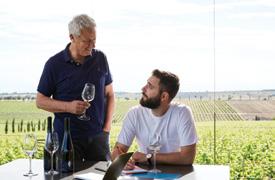
Ktima Biblia Chora
One of the most beautiful wineries in the Northern Greece landscape and a must-see when touring wine country. Founded by two leading Greek oenologists –Vangelis Gerovassiliou and Vassilis Tsaktsarlis. Our tour starts at the vineyards. We follow the guides into the impressive building, the vinification area and the underground ageing cellars in order to eavesdrop on the wines breathing as they mature.
Info:
Kokkinochori, Kavala
tel. + 30 25920 44974 www. bibliachora.gr
Domaine Costa Lazaridi
Founded in 1992, is a leading Greek winery and one of the country’s most significant wine-related developments. Famous for its emblematic wine serie Amethystos. In 2024, 33 years after its creation, the Amethystos family has radically changing its look by adopting a more simple yet modern line. And its revamped label also launched the winery’s new corporate identity, Estates Costa Lazaridi.
Info:
Adriani, Drama
tel. + 30 25210 82231, 25210 82348 www.domaine-lazaridi.gr
Nico Lazaridi
Nico Lazaridi is a solid wine producer from Drama. In a well-designed complex wine aficionados have the opportunity to taste their wines and visit the impressive art gallery.
Info:
Agora, Drama
tel. +30 25210 82049 www.chateau-lazaridi.com
A great producer from Drama and an elegant winery consisting of two sites linked by an impressive underground tunnel serving as a wine cellar.
Info:
Mikrohori Drama
tel. 25210 83626 www.wineart.gr
Ktima Pavlidis
The state of the art equipped unit stands out not only for its functionality, but also for the high level of minimalistic aesthetics and a New World wine philosophy.
Info:
Kokkinogia, Drama tel. + 30 25210 58300 www.ktima-pavlidis.gr
Oenogenesis Winery
Mountain views, beautiful vineyards and traditional Macedonia manor house architecture are the features of “veteran” oenologist Bakis Tsalkos winery.
Info:
Adriani, Drama tel. +30 25213 01048, 6977587629 www.oenogenesis.gr
Manolesakis Estate
The estate has been producing wines with fanatical friends for some 30 years.
Info:
Adriani, Drama tel. +30 25210 82010 www.manolesakis.gr
Oenops Wines
The clean modern aspect of Oenops wines reflect the philosophy of experienced oenologist Nikos Karatzas.
Info:
3rd km Prossotsani - Kato Vrontou, Drama tel. +30 25220 60000 www.oenopswines.gr
Domaine Porto Carras
Greece’s largest single organic vineyard and one of the largest in Europe. Visits to the estate can include a tour of the winery, wine tasting, walks, picnics among the vines.
Info:
Neos Marmaras, Sithonia, Halkidiki tel. + 30 2310 253758, 23750 77437 www.portocarraswines.gr
Ktima Gerovassiliou
The state of the art equipped unit stands out not only for its functionality, but also for the high level of aesthetics in the impressive wine museum, which hosts a rich program of cultural, scientific and artistic events.
Info:
Epanomi, Thessaloniki tel. +30 23920 44567 www.gerovassiliou.gr
Arvanitidis Estate
Agronomist Thanassis Arvanitidis and his brother George, with deep knowledge of the vine and persistence for quality, installed their own vineyards and their ”garage” winery on the eastern slopes of Vertiskos Mountain.
Info:
Askos, Thessaloniki tel. +30 23950 61626
www.arvanitidis-estate.gr


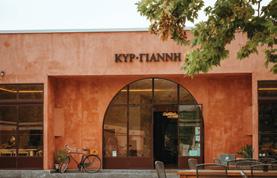
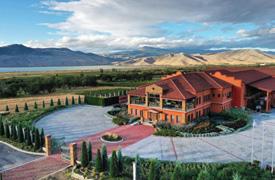
Boutari / Naoussa Winery
The main production center of this famous wine company. A tour of the winery includes a multimedia show called “In the Environs of Naoussa,” about the history of all three vinegrowing regions (Naoussa, GoumenissaAmyndeon) where the Xinomavro flourishes.
Info:
Stenimahos, Imathia tel. +30 23320 59700 www.boutari.gr
Ktima Kir-Yianni / Naoussa
In the ‘60s these vineyards in Yiannakochori, the highest elevation of the wine making zone, planted with the Xinomavro contributed to the rebirth of Naoussa’s wine, which had fallen to a low point.
Info:
Yiannakochori, Naoussa tel. +30 23320 51100 www.kiryianni.gr
Argatia
A tour of this small, modern family-run winery by the owner, agricultural expert/oenologist Dr. Haroula Spinthiropoulou, includes an introduction to the principles of organic farming and concludes with a tasting.
Info:
Rodochori, Naoussa tel. +30 23320 51080 www.argatia.gr
Estate Chrisohoou
40°39’45.28” N 22°05’51.86” E
The family winery welcomes wine enthusiasts for a tour of the production facilities, a visit of the wine museum and a delicious tasting.
Info:
Nea Strantza, Imathia tel. +30 23320 45080 www.chrisohoou.com
Aidarini Winery
The Aidarinis family has been active in the region’s wine and tsipouro production since the end of the 19th century. They welcome visitors for a tour and wine tasting into their new fully equipped winery as well as their traditional picturesque wine cellars.
Info:
Goumenissa, Kilkis tel. +30 23430 41239, 23430 42555 www. aidarini.gr
Mikro Ktima Titou
This modern unit is a good choice for those traveling the area and wishing to acquaint themselves with its wine profile. They will have the opportunity to wander in the vineyard, see the winery and taste the wines.
Info:
Goumenissa, Kilkis tel. + 30 2343 043074 www.mikroktimatitos.com
Alpha Estate
Alpha Estate, founded by talented oenologist Angelos Iatridis and vineyard expert Makis Makridis, has discovered exceptional new world charm in this old world region. In their state of the art winery you will enjoy a tour and tasting of their multi award-winning wines.
Info: Amyndeon, Florina tel. +30 23860 20111 www.alpha-estate.com
Amyntas Wines
A visit to the Amyndeon Cooperative Winery, one of the first cooperatives in Greece, begins in the lovely reception room and continues on to the underground barrel cellar and the production room.
Info:
Amyndeon, Florina tel. +30 23860 23813 www.amyntaswines.gr
Ktima Kir-Yianni / Amyndeon
In the welcoming environment of the brand new oenotourism hall of the winery, in Agios Panteleimonas, you will enjoy a tour and learn much about the history of the area’s wine.
Info:
Agios Panteleimonas, Florina tel. +30 23860 61185 www.kiryianni.gr
Ktima Vogiantzi
Situated at the entrance of Velvendos village, close to Lake Polyfitos, the winery offers an audiovisual presentation of Velvendos’ history, the estate’s history and its tradition in vine cultivation and winemaking.
Info:
Velvendos tel. +30 24640 32283 www.ktimavoyatzi.gr
Dio Filoi
A small family-run winery in a building, which is a faithful replica of an old Siatista house. We’ll taste the renowned sweet wine of the area in a reception room with a fireplace and traditional furniture. The traditional family cellar is also nearby.
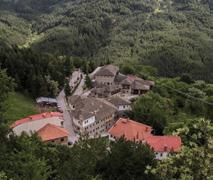


Info:
Siatista, Kozani
tel. +30 24650 22224 www.diofili.gr
Katogi Averoff
Katogi Averoff welcome visitors for a tour and wine tastings in a beautiful building designed according to the traditional architecture of the area. Right next to the winery with a view of the mountain slopes of Pindos, one can find the 4* Hotel Katogi Averoff, an utterly atmospheric hotel with an intense focus on wine.
Info:
Metsovo, Ioannina
tel. + 30 26560 31490 www.katogiaveroff.gr
Domaine Katsaros
Domaine Katsaros is a small family enterprise established in 1985, in Krania, at an altitude of approximately 800 metres on the slopes of Mount Olympus. Visitors can enjoy a panoramic view of the Aegean from the estate`s winery.
Info:
Krania, Larissa
tel. +30 2410 536811, 24950 41666 www.ktimakatsarou.gr
Domaine Zafeirakis
The Zafeirakis family is involved with the viticulture in the area of Tirnavos for more than 100 years. Christos Zafeirakis, the fourth in the line who continues the family tradition, takes the family business to the next level by bottling fine wines from his private vineyards and achieving the revival the local variety Limniona.
Info:
Palaiomylos, Tirnavos
tel. +30 24920 25280 www.domainezafeirakis.gr

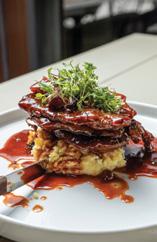
The Akadimia Art Restaurant is exactly what it promises: A wonderful place of art and gastronomy with Mediterranean cuisine and art events
The Akadimia Art Restaurant is a warm space with a friendly environment, a special aesthetic with artworks adorning the space and a wonderful cuisine. The passion and creativity of its owners, Konstantinos Markos and Konstantinos Garganis, have succeeded in combining these two loves in a place that is addressed to those who seek an outing different from the usual.
The delicate flavours are based around a basic axis. That of excellent quality. Fresh raw materials - many of which come from their orchard - always in season, most of them organic, make up the raw material for the imaginative dishes you will enjoy at Akadimia. Of course, a special meal becomes ideal when accompanied by the right wine. In Akadimia the wine list is updated with a wonderful selection of wines.
All of the above can be enjoyed inside the restaurant, as well as on the beautiful pedestrian street of Agios Minas or in its lovely courtyard, which in summer it is truly an oasis of beauty in the centre of Thessaloniki.
3, Agiou Mina St. | Ano Ladadika, Thessaloniki Tel. + 30 2310 521803
fb.akadimiaestiatorio
tripadvisor: akadimia
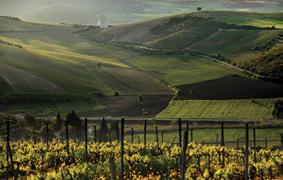
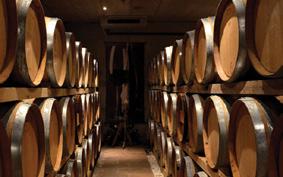

Domaine Migas
Domaine Migas specializes in Muscat bottlings from Tirnavos region. The family vineyard is extended to more than 120 ha in Palaios Abelos site, where they run an impressive winery.
Info:
3ο km. Tirnavos-Kozani road tel. +30 24920 25215 www.domaine-migas.gr
Theopetra Estate
This is the Tsililis family’s (producers of famous tsipouro) estate. The vineyards extend around the prehistoric cave of Theopetra at the foothills of Meteora Rocks and in their icon winery they highlight the terroir’s particularities.
Info:
Raxa, Trikala tel. +30 24310 85885 www.tsililis.gr
Domaine Hatzimichali
Since ‘70s with the first harvest in Atalanti, ‘80s with the first bottled Greek Cabernet Sauvignon that helped to bring out the potential of the “small wine producers” and to this day Dimitris Hatzimichalis passionately guides the estate’s choices. Now his assistants in this effort are his two sons. Eight vineyards, a state-of-the-art winery and the restaurant of our estate await the visitors.
Info:
Atalanti, Fthiotida tel. +30 210 8075512, 22330 23172 www.hatzimichalis.gr
Avantis Estate
Avantis estate is the vision of winemaker Apostolos Mountrihas who put flesh and bones on the family wine tradition, starting the production of quality wines in Mytikas
about 25 years ago. Today they are one of the top quality Syrah producers in Greece and a famous oenotourism spot.
Info:
Mytikas, Halkida, Evia tel. +30 22210 55350 www.avantisestate.gr
Vriniotis Winery
The Vriniotis winery is based in Gialtra, a small village in northern Euboea. It operates throughout the year and welcomes visitors who may taste its wines while enjoying the captivating view, for one can behold the vineyard, the northern Euboekos Gulf and the Oreoi passage that leads to the Aegean sea.
Info:
Gialtra, Evia tel. +30 22260 32429 www.vriniotiswinery.gr
Oenotria Land
In a gorgeous natural setting, in north Attica, we will find the second wine complex of Domaine Costa Lazaridi, the first being in Drama (see p. 32). It consists of vineyards, an excellently equipped winery, underground ageing cellars, halls and an impressive wine museum that provide the visitor with a comprehensive overview of the wine, spirits and vinegar production.
Info:
Kapandriti, Attica Tel. +30 22950 52213, 52214 www.domaine-lazaridi.gr
Roxani Matsa Estate
The Matsa Estate is a historical vineyard of 12.2 ha, cultivated since the end of the 19th century. Roxane Matsa, an authentic viniculturist, Wine Personality of 2001 for the Greek Wine Press Union, has undertaken the continuance of this tradition.
Info:
Kantza, Attica tel. +30 6947 007021 www.roxanematsaestate.com
Kokotos Estate
The Kokotos Estate was created in 1970 in Stamata, Attica, by George and Anne Kokotos. Today, they keep on cultivating their organic vineyards, producing their wines and welcoming visitors from all over the world in their family winery which is in complete harmony with the nature.
Info:
Stamata, Attica tel. +30 210 8145113 www.kokotosestate.gr
Domaine Papagiannakos
Vassilis Papagiannakos specializes in Savatiano bottlings from Markopoulo region of Attica. His winery is the first especially designed and built in Greece according to innovative bioclimatic conditions, and which most clearly marks a new era.
Info:
Markopoulo, Attica tel. + 30 22990 25206 www.papagiannakos.gr
Strofilia Estate
Decorated inside and out with works by contemporary Greek artists, the Strofilia’s winery is equipped with dozens of tanks, climatically-controlled storage areas and a separate visitors’ centre where a number of wine-related events are held each year.
Info:
Anavyssos, Attica tel. +30 22910 41650 www.strofiliawines.gr

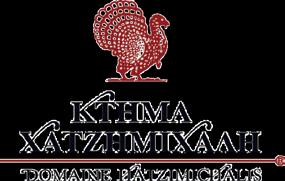


Domaine Skouras
The state of the art equipped unit stands out not only for its functionality, but also for the high level of aesthetics in the welcoming area. The welldesigned tour guide us inside charming cellars before leading us to the beautiful wine tasting hall.
Info:
Μalandreni, Argos tel. +30 27510 23688 www.skouras.gr
Lafazanis Winery
This tasteful winery, one of the largest in this zone, is built at Ancient Kleones, a stone’s throw from the ruins of the ancient temple of Hercules. Through the guided tour, we will learn more on the region’s history, wine production and wine tasting secrets.
Info:
Ancient Kleones, Nemea
tel. +30 27460 31450 www.lafazanis.gr
Semeli
Impressive in size, architecture and design, Semeli winery is located on a beautiful spot at the altitude of 600 meters in Koutsi and affords stunning views of Nemea vineyards. The estate proposes tour & wine tastings, plus lunch at the cosy dining room and overnight accommodation at the guesthouses.
Info:
Koutsi, Nemea
tel. +30 27460 20360, 27460 20960 www.semeliwines.gr
Gaia Wines
Gaia Wines’s creators installed their wineries in two excellent wine regions of Greece, Santorini (see p. 40) and Nemea. Their labels hide a simple yet ‘challenging’ idea: delve into the limits of Greek varieties through cutting-edge
technology and offer to wine lovers the best possible result.
Info:
Koutsi, Nemea tel. + 27460 22057 www.gaia-wines.gr
Palivou Estate
Giorgos Palivos decided in 1995 to turn the old traditional wine press of the family farm into a modern winery. So began the new, very dynamic era for this estate, with the active participation of the new generation that followed.
Info:
Ancient Nemea tel. +30 27460 24190 www.palivos.gr
Tselepos Winery
Elegant and functional, with the stunning mountains in the background and “planted” right at the heart of their 30 ha privately owned vineyard, the winery alludes to the architecture of the towers in mountainous Arcadia. The visit includes a walk to the vineyard, the production facilities and cellars, before arriving at the wine tasting hall.
Info:
Rizes, Arkadia tel. +30 2710 544440 www.tselepos.gr
Domaine Spiropoulos
The splendid stone tower that rises above the modern winery reveals the Spiropoulos family’s relationship with wine since 1860. With 50 ha vineyards in the Mantinia zone, they are among the most fervent supporters of organic cultivation in the Peloponnese.
Info: Artemisio, Arkadia tel. + 30 27960 61400 www.domainspiropoulos.com
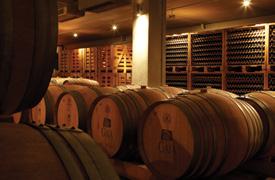
Rouvalis Winery
Since its establishment in 1990, this winery figures among the pioneers in the rebirth of quality Greek wine. Since the very beginning, its creator, oenologist Angelos Rouvalis, pursued the policy of collaborating with the entire zone. His contribution in the case of the Egialia viticulturists towards cultivating old local grapes was of decisive importance.
Info:
Selinous, Egio tel. + 30 26910 29415 www.rouvaliswinery.gr
Cavino – Mega Spileo Estate
A large-scale winery & distillery, one of the larger Greek exporters of bottled wine. In 1999, Cavino undertook and re-established the -then untended- vineyard of the Mega Spileo Monastery, spreading in upland Egialia and situated at an altitude of 800 meters, with a tremendous view overlooking the Vouraikos gorge.
Info:
Gefira Meganiti, Egio tel. + 30 26910 71555 www.cavino.gr, www.megaspileo.gr
Parparoussis Winery
At the outskirts of Patras, in the Mpozaitika suburbs, the visitors can see the vineyard, the winery and distillery of the Parparoussis family. The garden with its trees, large plants and magnificent peacocks is an oasis of coolness and calm. Follows the tasting of their wines and famous distillates.
Info: Patras tel. + 30 2610 420334 www.parparoussis.com
Antonopoulos Vineyards
The Antonopoulos Vineyards are the creation of Konstantinos Antonopoulos, a man who

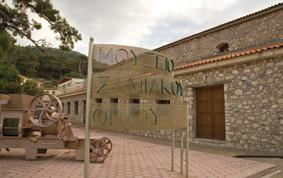

believed in the excellent quality potential of the Peloponnesian soil, particularly of mountainous and semi-mountainous Achaia. A new, modern winery was built at Vassiliko in Achaia, where the company’s main vineyard is situated.
Info:
Vassiliko, Achaia tel. + 30 26940 61447 www.antonopoulosvineyards.com
Achaia Claus
Achaia Clauss, located on the namesake hill, was founded in 1861 by the Bavarian Gustav Clauss and is the oldest winery in Greece. The sweet red wine that Clauss first produced in 1873 was given the name “Mavrodaphne” and became a Greek wine legend. The stone buildings, the large carved oak barrels with one centuryold Mavrodaphne, the museum, but also the unique landscape with magnificent views attract thousands of visitors every year.
Info:
Petroto, Achaia tel. +30 2610 368100 www.clauss.gr
Nestor Winery
The huge winery lies north of the Bay of Navarino just a few kilometres away from the ancient palace of King Nestor, and its surrounding area, considered one of Messinia’s most historical locations. The elegant reception area with its splendid view is a true “window to the sky” at the centre of Mycenaean land, where viniculture has existed for more than 4,000 years, as proved by archaeological research.
Info:
Pyrgos, Trifilia tel. + 30 27630 41073 www.nestorwines.gr
Monemvasia Winery
The largest winery in Laconia belongs to Monemvasia Winery. Its founder, oenologist
George Tsimbidis, in collaboration with the Farm Schools of Athens and Thessaloniki, conducted research for the identification and re-cultivation of grapes from which the Malvasia wine was made. Today, the contemporary Malvasia wine from Monemvasia is a fact.
Info:
Monemvasia, Laconia tel. + 30 27320 53096 www.malvasiawines.gr
Mercouri Estate
The Merkouri Estate at Korakochori, Ilia is a true gem! A farm of unique beauty, overlooking the Ionian Sea. And with its 150 years of tradition in producing olive oil, wine and Corinthian raisin before that is one of the most historic wineries of Greece. Covering 16 ha, it is considered among the most beautiful wineries in Greece.
Info:
Korakochori, Ilia tel. +30 26210 41601 www.mercouri.gr
Estate Chatzigeorgiou Lemnos
This modern and well organized winery reflects the care Chatzigeorgiou family gives to its wines, showcasing the Muscat of Alexandria potential in dry, sweet, semi-sparkling and sparkling version.
Info:
Karpasi, Lemnos tel. +30 22540 31082
www.chatzigeorgioulimnos.gr
United Winemaking Agricultural Cooperative of Samos (UWC SAMOS)
A powerful, dynamic and absolutely successful cooperation, it vinifies around 7.000 tons of the White Muscat in two wineries. Taking advantage of the tourist traffic of the island in order to
promote the wines, the Museum of Samos Wine was created.
Info:
Malagari, Samos tel. +30 22730 85111
www.samoswine.gr
Boutari / Santorini Winery
The Boutari Winery in Santorini, with its distinctive white dome, first operated in 1989, and has played a leading role in the viticultural development of the island. Open to the public, it offers its visitors a complete guided tour filled with the magical aura of Santorini.
Info:
Megalochori, Santorini tel. +30 22860 81011 www.boutari.gr
Santo Wines
The location of the Union of Santorini Cooperatives’winery is quite privileged as it has a view of the volcano and attracts thousands of the island’s visitors. The tour includes acquaintance with the winemaking facilities, cellars and ends at the balcony above the Caldera for a wine tasting.
Info:
Pyrgos, Santorini tel. +30 22860 22596 www.santowines.gr
Hatzidakis Winery
In 1999, oenologist Haridimos Hatzidakis established the Hatzidakis Winery in Pyrgos. Today, his children continue the winery’s history, making their wines from their organically cultivated vineyards (10 ha). Their new winery awaits the visitors for a tour in the vineyards, in the winery and for a tasting of their labels.
Info:
Pyrgos, Santorini
Tel. +30 698 110 7180 www.hatzidakiswines.gr

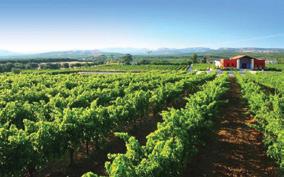

Artemis Karamolegos Winery
Based upon the family’s winemaking tradition since 1952, the winery made a dynamic entry in contemporary winemaking in 2004, when Artemis Karamolegos invested in the production facility and the privately owned vineyards. They welcome visitors for winery tours and carefully designed series of “interactive” wine tasting experiences.
Info:
Exo Gonia, Santorini tel. +30 22860 33395 www.artemiskaramolegos-winery.com
Argyros Estate
The state of the art equipped Argyros winery stands out not only for its size and functionality, but also for the high level of modern aesthetics. Standing in the center of the estate’s main vineyard (40 ha - the largest single vineyard of the island) proves the great development for the family that has been producing wine since 1903.
Info:
Mesa Gonia, Episkopi, Santorini tel. +30 22860 31489 www.estate-argyros.com
Gaia Wines
Situated on a beach, on the east side of the island, the industrial stone winery built in the beginning of the 1900s used to be a tomato factory until the 1970s. Today, the hightech equipment guarantee contemporary winemaking and ideal conditions for high quality vinegar production.
Info:
Monolithos, Santorini tel. +30 22860 34186 www.gaiawines.gr
Anhydrous Winery
Enchanted from the Assyrtiko and the uniqueness of Santorini’s terroir, Apostolos
Mountrichas from Avantis Estate in Evia (see p. 28) launched their PDO Santorini wines. They welcome visitors at Anhydrous Winery at Fira and through wine tours, wine tastings, wine and food pairing, wine lunch at the restaurant and wine spa cosmetics provide a unique oenotourism experience.
Info:
Fira, Santorini www.avantisestate.gr
Domaine Sigalas
Domaine Sigalas vinify their wines and welcome visitors in their winery, at Baxedes area of Oia. The scenic location of the winery and the positioning of the wine tasting room to the west, affords the opportunity to all guests to enjoy the colours of the setting sun as it descends on the vineyard.
Info:
Baxedes, Oia, Santorini tel. +30 22860 71644 www.sigalas-wine.com
Dourakis Winery
1988 was the year that oenologist Andreas Dourakis decided to utilize its family vineyard at the mountainous village Alikambos. His children led it through a steady rising course in their new winery, inside the privately-owned vineyard.
Info:
Alikambos, Chania, Crete tel. +30 28250 51761 www.dourakiswinery.gr
Douloufakis Winery
The tradition and history of Douloufakis family in wine production begins in 1930. Nikolas Douloufakis, a wine-maker born and certified oenologist, took over the family winery and proceeded to the renewal of the premises and the production of modern style wines from his own vineyards in Dafnes.
Info:
Dafnes, Heraklion, Crete tel. +30 2810 792017 www.cretanwines.gr
Diamantakis Winery
Diamantakis winery is a modern winery located southwest of the city of Heraklion in the heart of the province Malevizi, outside the village of Kato Assites. Their vineyards are cultivated according to the principles of Integrated Management System.
Info:
Kato Assites, Heraklion, Crete tel. +30 6949 198350 www. diamantakiswines.gr
Stratadirakis Winery
This is a family-owned winery in South Crete. The private-owned vineyard, mainly vines of the Holy Apostles Sinai monastery, is located at the foot of Asterousia Mountains. The newbuilt winery combine the tradition with the technological achievement.
Info:
Kasteliana, Heraklion, Crete tel. +30 6977 805355, 28910 71275 www.strataridakis.gr
Orealios Gaea
On the plateau of Omalon, right next to the famous monastery of Agios Gerasimos, patron saint of the island, we will find the winery of the Producers’ Cooperative of Robola Cephalonia. The coop was created in 1982 by the winegrowers of the zone. In 2005 the huge winery was completely renovated, and now proposes new labels, an interesting guided tour and a comfortable salle for tasting.
Info: Omala, Cephalonia tel. +30 26710 86301 www.orealios.gr
YEARS


www.arvanitidis-estate.gr
#ktimaarvanitidi
#arvanitidisestate








Amethystos white. Estates Costa Lazaridi
33 years after its creation, the popular Amethystos family is radically changing its look by adopting a more simple yet modern line. In the white Amethystos 2024, the dominant white blend of the Drama zone (Sauvignon Blanc 85%, Assyrtiko 15%) is expressed with clean aromas of citrus, pineapple and green pepper. Crisp mouthfeel, warmth, endless aromatic aftertaste. The origin of the grapes, from the youngest and highest altitude vineyards of the famous estate, ensure the liveliness of the acidity and the freshness of the fruit. (PGI Drama)
Idisma Drios Assyrtiko, Wine Art Estate
A world class white wine, an excellent example of the beloved relationship between Assyrtiko and barrel (fermentation and 6 months in 225l. oak barrels). Fleshy and incredibly charming it reveals toasty notes of golden apple, as well as peach and apricot aromas. Somehow it combines fabulously fruit, honey and spice flavours with a savoury minerality, leading to a dry finish. (PGI Drama)
Malagousia, Manolesakis Estate
Manolesakis Estate in Drama crafts fine, velvety textured wines. Their Malagousia is typical in all its expressions. The 3-month aging in acacia barrels brings to our glass a golden yellow wine that balances tropical fruit with spicy herbal notes. And the full-bodied flavour lands gently on the palate, to fade gently and slowly. (PGI Drama)
Ovilos white, Ktima Biblia Chora
The iconic producers from Pangeon Mount offer us the multi award-winning white Ovilos. The flavour freshness, lemony power, richness and length of this Assyrtiko/Sémillon blend are simply remarkable to behold and experience! Look for aromas of peaches on the nose with flavours of lemon zest and vegetal hints combined with refreshing acidity and a long flinty finish. (PGI Pangeon)
Omen, Mountainous Vineyards of Konstantinos Lalikos
A SB from mountain vineyards (600 meters) in Palaia Kavala. Barrel fermentation and 8-month ageing with lees contact and continuous bâtonnage contribute to the round flavour profile. The elegant nose combines fresh aromas and vanilla without masking the rich fruit character. Dense presence on the palate as well without sacrificing a drop of acidity. (PGI Kavala)
Malagousia, Ktima Gerovassiliou
It’s rare for Malagousia to be as clean and refreshing as this wine is, while still feeling rich. Vangelis Gerovassiliou, the... grand maitre of the variety selects his oldest vines in Epanomi, Thessaloniki for this wine that has been -partiallyfermented and matured in oak barrels. The flavours explode with scents of lime and bright notes of tangerine, fattening up in the middle before lasting on a long, tangy line of citrus. A wine that is totally consistent in style. (PGI Epanomi)




Debina Classico, Zoinos Wines
This white offering from Debina grapes grown on steep limestone slopes of Zitsa region in Epirus shows tons of regional character, not to mention terrific personality. A refreshing fruity aroma with lovely finish makes it impossible to resist a second taste. (PDO Zitsa)
The Tear of the Pine, Domaine Stelios Kechris
Stelios Kechris, a winemaker born and bred, is one of the forwarders in the realization of the “quality retsina, a contemporary and quality wine based on an age-old tradition”. The Tear of the Pine is an elegant Retsina, based on Assyrtiko with a subtle hint of resin. Aromas of fresh citrus combined with mastic, herbal tones of rosemary, thyme, ginger and an elegant barrel presence. Sharp acidity, intense minerality and an impressive long-lasting finish. (Traditional Appellation Retsina)
Akakies Sparkling, Kir-Yianni
Who says Xinomavro has to be big, bold, and red? Kir-Yianni takes this often austere red variety and vinifies it as an off-dry, soft and round sparkling rosé brimming with red fruit and sweet baking spice. It comes from selected vineyards in Agios Panteleimon, Amyndeon, the coldest wine-growing region of Greece with its unique mesoclimate, characteristic poor sandy soils and altitudes exceeding 600 meters. It’s a perfect aperitif but its pairing with lahanodolmades (stuffed with meat and rolled cabbage leaves) is one to remember. (PDO Amyndeon)
Eruption rosé, Noema Winery
This pink hue wine captures the dynamic spirit of Xinomavro grape into an elegant refreshing rosé from Amyndeon. Expect light body, fresh acidity, dried fruits, flowers and wild herbs next to cranberries and gooseberries in the nose. Even more expressive in flavours, it combines lovely white wine style with volume and power. (PDO Amyndeon)
Rosé Xinomavro, Arvanitidis Estate
Made from Xinomavro grapes grown in Askos semi-mountainous region of Thessaloniki, this sophisticated, delicious rosé wine is salmon pink-coloured and delicately inviting in blackberries and strawberry. Stainless-steel fermented and matured in fine lees for 4 months, it remains crisp on the palate with just a touch of tangerine richness on the finish. So bring on the shrimp, haul out the salmon steaks or prepare the vegetables and start grilling, because it is a perfect barbecue companion. (PGI Thessaloniki)
Pamidi rosé, Ktima Vourvoukelis
A pale pink coloured wine from Pamidi grapes sourced from selected vineyards of Avdira, Thrace. Fresh, fragrant, dry rosé with flavours of flowers and herbs. Delicately fruity with lovely focus and good acidity is a superb wine for aperitif or summer parties. (PGI Avdira)













Xinomavro Reserve “Vieilles Vignes”, Alpha Estate
When it comes to Amyndeon, Alpha Estate is king and their Old Vine Xinomavro is not to be missed. The grapes come from the single-vineyard block of “Barba Yiannis”. The grapes are fermented in horizontal tanks, allowing the slow extraction of tannin and flavours. Dark fruit flavours and smooth tannins make this a red wine lover’s perfect match. (PDO Amyndeon)
Grande Réserve Naoussa, Boutari
From Boutari, one of the most recognized Greek names in the world of wine today, comes this Naoussa, a timeless value for the friends of Xinomavro. With captivating aromatic complexity, it fills the glass with blackberries, dried plums and sweet spices. The absolute grape typicity is ideally expressed on the nose with olive and tomato leaf, while the austere palate boasts a strong backbone and ripe tannins. Aged for 4 years, including 2 years in French oak barrels. (P.D.O. Naoussa)
Gi & Ouranos, Thymiopoulos Vineyards
In the southern part of Naoussa zone, Apostolos Thymiopoulos established his vineyards applying biodynamic cultivation. He was one of the first in Greece to propose a young version of Xinomavro. Gi & Ouranos is one of the freshest bottles of Xinomavro on the market. This beautiful Naoussa pours a gorgeous magenta colour, brimming with fresh, fruity flavours. There’s a ripe fruit character that makes it remarkably forward and lush. It’s dry, fine, with a long finish. (PDO Naoussa)
Naoussa, Diamantakos Wines
The red label of Giorgos Diamantakos is a Naoussa, a worthy representative of the modern style in Xinomavro. Consistently, every vintage, it displays an expressive aromatic palette and typicity on the nose, with gooseberries, spices, tomato. In the flavour, Xinomavro’s rigor is supported by vibrant fruit and nicely worked tannins. (PDO Naoussa)
XinomavRaw, Oenops
The creator of the “Raw” wine range, oenologist & winemaker Nikos Karatzas raises the bar of expectations from the wines of this style very high. Applying zero intervention winemaking to this Xinomavro suggests a wine with a dense black fruit nose, elegant structure and nicely structured tannins. Made from selected 45 - 80 years old vines in Amyndeon, Naoussa and Rapsani regions. (Varietal wine)
Ï Single Vineyard, Aidarinis Winery
Aidarinis family captures the soul of the Goumenissa landscape and the character of an exceptional vineyard site. This single vineyard Xinomavro/ Negoska blend is an elegant red wine, intensely complex with ground coffee/ blackberry aromas. The palate is powerful with mocha flavours intertwined with spicy oak and fine lacy tannins. (PDO Goumenissa)
Limnio, Domaine Porto Carras
A medium-to-full-bodied red wine from Sithonia area in Halkidiki and the indigenous grape Limnio. Red fruits with an elegant mouthfeel and a piquant aftertaste are the characteristics of the wine which is produced from the largest single organic vineyard in Greece and one of the largest in Europe, situated at 300 meters altitude. (PGI Sithonia)
Young Tsapournakos, Ktima Voyatzi
Tsapournakos grape of the Cabernet Franc family is the source material for this pretty, elegant, fine red white from Velvendos, Kozani. Clearly made in a leaner style than high-alcohol cult style, it trades richness for elegance and finesse. Aromatic, showing an expressive character of red fruit and spicy notes, is a wine meant to be enjoyed fresh paired with an endless range of tasty dishes. (PGI Velvendos)
Magic Mountain red, Nico Lazaridi
Blend of equal percentages of CS/CF grown in Drama vineyard, aged for 16-18 months in new French oak barrels + 18 months in bottle. Wine with fanatical friends, it shows off the virtues of both grapes. Nose with unsurpassed play of blackberry and cherry, ending with notes of chocolate and vanilla. Luscious texture and complexity. Powerful but well-worked tannins contribute to the composition of a red that will delight fans of complex wines. The bottle labels feature original artwork by celebrated painters. (PGI Drama)
Emphasis Syrah, Ktima Pavlidis
We are extremely fond of complex reds with firm tannins and lovely backbone and this wine suggests... power, in the bottle of a Syrah. Its nose slowly unfurls a cloud of aromas full of tobacco, sweet spices and red-black fruits. On the palate, acidity, vibrant tannins and a spicy finish create the perfect counterpoint to the rich structure. It comes from estate’s vineyards in Kokkinogia and Perichora, Drama (PGI Drama)











Assyrtiko, Domaine Hatzimichalis
Vibrant pale yellow colour leads to beautiful nose of citrus, peaches and hints of green pepper in the buttery aftertaste. This full-bodied Assyrtiko is shiny, like a summer day in Greece after a dip into Aegean Sea. Just a sniff and you are very aware that this has been ripened under the Greek sun. With this single vineyard Assyrtiko, Domaine Hatzimichalis offers a charming Central-Greece (Atalanti, Fthiotida) version of the variety. (PGI Atalanti valley)
Savatiano, Ktima Kokotou
Fine fruity character and refreshing levels of acidity in a light, delicate and well balanced Savatiano from non-irrigated old vines in Stamata, Eastern Attica. A well-made everyday white with pleasant aromas of white flowers and fresh fruit to complement the pleasure. (PGI Attica)
Retsina, Papagiannakos Winery
With this wine Papagiannakos has captured the perfect balance between pine and grapes (100% Savatiano). Fine and fringed by delicate tannins, it is both citrus fruity and textured. A must try for both retsina lovers looking for something different and newcomers. (Traditional Appellation Retsina)
Muscat of Tirnavos, Domaine D. Migas
A semi-sparkling white wine (Blanc de noirs) that expresses the essence of the aromatic grape Muscat of Hamburg. Groovy and crisp, extremely fine with an undertow of roses and delicious racy fruit tones. (PGI Tirnavos)
Aprilis, Theopetra Estate
What a beautiful sparkling rosé! Off-dry, with balanced bubbles, a gorgeous pale pink hue and a beautifully zesty, characterful flavour, this liquid love is based on the rare blend: Limniona + Xinomavro both grown in Meteora vineyard. It’s bright and fruity, bouncing with strawberry, gooseberries and a white spice note. (PGI Meteora)
Lenga Pink, Avantis Estate
Avantis Estate in Evia crafts rich, velvety textured wines. Their rosé is a beguiling Gewürztraminer + indigenous red Mavrokoundoura blend (50%-50%) that defies convention with unending aromas of roses, citrus and red fruits. A good mouth-watering attack and off-dry finish wakes up the palate and gets it ready for spicy foods. (PGI Evia)
Limniona, Domaine Zafeirakis
Christos Zafeirakis, the fourth in the line who continues the family tradition, takes the family business to the next level by bottling fine wines from his private vineyards in Tirnavos and achieving the revival of the local variety Limniona. Wild herbs, peppers, cherry and ripe strawberry. Particularly attractive aromatic bouquet and even more attractive complexity on the palate with finesse and elegant tannins. In his classic Limniona’s label, he introduces us to this rare variety. (PGI Tirnavos)
Mouchtaro, Muses Estate
In the Valley of Muses, Viotia, the homeland of Hesiod -one of the greatest poets of ancient Greece- lie the vineyards of Zacharias family. The three brothers took over and successfully completed the renewal of the estate that was founded by their grandfather in 1946. And this is a scarlet wine coming from their vineyards and the rare grape Mouchtaro. Aromatic on the nose with an undertow of red fruits and racy earthy notes.
(PGI Thebes)
Iama red, Vriniotis Wines
Vradiano is a rare red variety of Central Greece and Evia. Its wines appear with bright colour, medium body and aromatic complexity. Kostas Vriniotis offers us an appetizing red wine with delicious fruit, velvety tannins and a pleasant acidity, ideal for the time when pasta with tomato sauce, cannelloni, pizzas and sausages will be served. (PGI Evia)
Ktima Katsaros
The Cabernet Sauvignon and Merlot grapes for this wine are grown in the eastern foothills of Mount Olumpus. The high altitude (750 meters) creates rich, full-bodied wines. Classic Bordeaux-style, balanced with aromas of cassis, black currant and spicy flavours. (PGI Krania)
Oenotria Land Cabernet Sauvignon & Agiorgitiko
Estates Costa Lazaridi
Balance, complexity, élan, aplomb, verve... haven’t we forgotten anything? Rich warmth. We are helpless in the face of such concentration! Made from CS and Agiorgitiko from the Attica vineyard with extremely low yields, this round, smooth-textured red shows the best of both varieties. (PGI Attica)





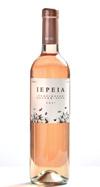

Amalia Brut, Ktima Tselepos
No winery in Mantinia has explored Moschofilero grape more than Ktima Tselepos, and with the Amalia Brut, they’ve produced a textbook sparkling Moschofilero! Popular and enjoyable sparkling, charming and elegant, dry and lively with a lovely aroma profile of citrus, roses, honey and nuts, made with the same process as Champagne (méthode traditionnelle). (PDO Mantinia)
Mantinia, Domaine Spiropoulos
A Moschofilero with playful grey highlights. Complex and fresh on the nose, it starts with a floral background that gradually gives way to citrus. Dense mouthfeel, with zesty acidity, pleasant herbal notes and an appetizing tannic finish. The grapes are sourced from selected organic vineyards planted on Artemisio, Zevgolatio & Agiorgitika sites, Mantinia (altitude: 650 meters). (PDO Mantinia)
Optimum, Novus Winery
The master of Moschofilero, Leonidas Nasiakos, presents a great single vineyard Mantinia made from organically farmed grapes (>50 years old vines) with emphasis on prolonged skin contact in stainless steel but with 6 months in acacia barrels and concrete tanks for extra intensity and richness. It combines aromatic complexity, exceptional freshness and flavourful volume. The nose, full of rose water, citrus jam and dried herbs, offers pure pleasure. (PDO Mantinia)
Asprolithi, Oenoforos
The first wine that introduced us to the beautiful Egialia wine-growing zone back in 1990, “one of the most interesting vinicultural regions in the world” (Stavroula Kourakou, honorary chairwoman of the O.I.V.). A superb mountain Rhoditis with an aroma of yellow fruit and beautiful acidity on a mineral background, it advocates the efforts of its creators to elevate the zone to a distinct terroir and perhaps an Appellation of Origin. (PDO Patras)
Lexis Gris Sur Lie, Zacharias Winery
This perfumed, pale-pink wine is a well-made rosé expression of Moschofilero. Whiffs of rose petal and lemon tree blossom accent rich, concentrated flavours


of orange peel and fresh herbs. Fine and fringed by balanced acidity, it’s a refreshing but solidly built dry wine. The third generation of these Nemea wine-makers continues the tradition which began some decades ago. (PGI Peloponnese)
Ieria, Bosinakis winery
Bosinakis winery is a purely family business with vineyards situated at the villages of Steno, Lithovounia and Agiorgitika in Arcadia, where the microclimate favours the cultivation of Moschofilero more than in any other part of the zone. And this is a soft pink hue wine of clean varietal nose expressed with the typical rose aroma alongside ripe citrus, peaches and green herbs. Elegant yet austere, balanced and a touch mineral at the same time. (PGI Arkadia)
Pelpo, Domaine Skouras
Bright pink in colour, with really nicely judged white flowers and raspberry fruits, as well as some lemony acidity. Complex and well balanced, Skouras rosé is an alluring beauty made by mixing 3 grapes and vinification methods: the Syrah ages on its fine lees in stainless steel tanks, the Agiorgitiko in acacia barrels and the Mavrofilero (a Moschofilero clone) in egg shaped amphorae. (PGI Peloponnese)
Babel rosé, Astir X
The Astir-X team, at their winery in Messinia, blends 3 parts Moschofilero with 1 part Syrah and the result is an attractive rosé, with pleasant acidity, fruit and a creamy finish. Crisp and elegant, it has explosive aromas of rose, lemongrass, doughnut and a light flavour to match its appearance. (PGI Peloponnese)
Three Witches, Barafakas Winery
The third generation of these wine-makers continues the tradition which began some decades ago. This gorgeous semi-sweet and semi-sparkling rosé is a blend of Agiorgitiko, Syrah and Moschofilero (80%-10%-10%). Groovy and crisp with a lovely pink blush hue it offers three-dimensional nose: sour-cherries, raspberry, strawberry. Delightfully mature and full-bodied is a crowd-pleaser. (Varietal wine)










Gaia Estate, Gaia Wines
A highly expressive Nemea full of carnation and sour cherry aromas. Deeply coloured, incredibly flavourful, rich, velvety textured…, a terrific red wine. Once appeared it has changed the appellation’s orientation and future. Look for plush, generous texture, plum fruit, cherry and spice flavours. Rich and appealing, it should develop over the next decade. (PDO Nemea)
Nemea, Ktima Palivou
The main Nemea label of the Palivos family is a fascinating study of Agiorgitiko. A kaleidoscope of aromas and flavours. With beautiful fruit and spices, it spent 12 months in new oak barrels. Rich and attractive, it will age well, giving an fine structured, elegant wine. (PDO Nemea)
Nemea Reserve, Semeli
When we visited for the first time Semeli’s winery in semi-mountain Koutsi, we gazed at the hills where the vines for this wine grow. It was an incredible sight and the wine that comes from there is even better. This full-bodied Nemea is a fascinating study of Agiorgitiko. With beautiful fruit and spice, it spent 12 months in new oak barriques, plus 12 months in bottles. (PDO Nemea)
Black Cone (Mavros Konos), Strofilia Wines
A special Nemea, well-rounded, harmonious, and rich with a lingering finish. The cool climate of mountainous vineyards in Asprokampos (800 meters) gives this Agiorgitiko a wonderful freshness and mouth-watering juiciness to balance the acidity. (PDO Nemea)
Mega Spileo Estate red
Cultivated on the Slopes of Egialia the two indigenous grapes: Mavrodaphne and Mavro Kalavritino (60% - 40%) realize their full potential, making plush and round wines, full of dark fruit flavours and smooth tannins, like this one. Mega Spileo Estate vineyard, located in the Agios Nikolaos plateau, upland Egialia and 800 meters altitude, can boast one of the choicest and most beautiful vineyard sites in Greece. (PGI Achaia)
Taos, Parparoussis Winery
Parparoussis family vinifies the Mavrodaphne grape to create this dry, dark, almost inky wine, with generous, layered aromas of red fruit, spiced with hints of liquorice and wild mint. In the mouth it is rich, complex and impressive, with soft, round tannins and an endless aftertaste. (PGI Achaia)
Mercouri Estate
This red from Mercouri beautiful estate in Ilia, is their flagship wine. Refosco and Mavrodaphne blend (85% - 15%), it shows bold aromas, with hints of cherry, roasted nuts and tobacco. On the palate it is well-rounded, harmonious, and rich with a lingering finish. (PGI Letrini)
Tomos IΙ Merlot, Panagiotopoulos Family Estate
A full-bodied, dense and intense Merlot, with stormy aromas of ripe fruit. Exceptionally balanced and exuberant, it proudly signs its purple colour on the “Tomos” envelope of the Messinia estate, which presents us the 3 French varieties (Merlot, Syrah, CS) that come only from organically cultivated vineyards. (PGI Trifilia)
Monemvasia – Malvasia, Monemvasia Winery – Tsimbidis
If you wondered what a Monemvasia-Malvasia, made from sun dried (1012 days) Monemvasia, Kidonitsa, Assyrtiko and Asproudes grapes, tasted like, this spectacular wine would certainly give you an idea of the combination of richness and acidity. Exotic aromas of peaches, apricots next to roasted almonds and chocolate. Delicious with a pleasant citrus trees fruit finish that goes on and on. A finish without end. (PDO Monemvasia – Malvasia)
Mavrodaphne Grande Reserve 1979, Achaia Clauss
This delightful Mavrodaphne of Partas (100% Mavrodaphne) is a gorgeous elixir with honeyed aromas and sweet memories of childhood. The aromas are classic Mavrodaphne’s, including prunes, figs, mocha and dark chocolate. Sweet and full-flavoured, it is terrifically balanced by a seam of acidity. Long, long finish. A terrific sweet wine with a Mediterranean heart. (PDO Mavrodaphne of Patras)






Lagopati Brut, Estate Chatzigeorgiou - Lemnos
Selected grapes from “Lagopati” vineyard in the mountainous community of Saint Dimitrios, the heart of viticultural area of Lemnos + cuve close vinification. Result: a sparkling Muscat of Alexandria with exquisite flavour. Ripe peaches and roses: the aromas intrigue us. (PDO Lemnos)
Santorini, Domaine Sigalas
Sigalas Santorini always delivers great quality in just about any vintage. Vibrant and youthful, this beauty is a pure expression of Assyrtiko made in the classic style. The wine possesses great intensity, good acidity to bring it into balance, citrus and minerals in the mix too. You could drink it now or hold it 3 years or more. (PDO Santorini)
Assyrtiko by Gaia Wild Ferment, Gaia Wines
This Gaia’s cuvée is a truly outstanding Assyrtiko -from Pyrgos vineyardsfermented by wild yeasts strains in small inox tanks and oak & acacia barrels. On the nose, it is very expressive with stone fruit and floral undertones. On the palate, it delivers high complexity and that characteristic touch of salinity that you often get with Assyrtiko planted on Santorini. Brilliant now, it should evolve nicely over the next 5 years. (PDO Santorini)
Skitali, Hatzidaki Winery
An Assyrtiko that marks the passing (skitali = relay baton) of Haridimos Hatzidakis winery to his children, reflecting the philosophy and style of Santorini that he himself loved. Typical and charming, it begins with doses of citrus and herbs before leading us through the varietal’s mineral palette. Juicy mouthfeel with warmth and the island’s salty expression on the finish. The grapes came from > 40-80 years old vines in Pyrgos & Megalochori. (PDO Santorini)
Therassea Mikri Thira
The first Santorini exclusively from Assyrtiko that grows in the island of Therassea, face to Santorini volcano. The wine possesses great intensity, good acidity to bring it into balance, layered nose with citrus and minerality in the mix too. A delightful and vibrant Santorini that shows its elegance and pedigree with confidence. 20% has been fermented and matured for 4 months in oak barrels. (PDO Santorini)





Ocean Vidiano, Idaia Winery
The winery in Venerato, Heraklion, Crete, offers an excellent expression of Vidiano grape with a wonderful fruity profile and creamy taste. Floral, herbal and ripe fruit aromas appear on the nose and palate, while the full mouthfeel offers a particular -for the grape- nerve. (PGI Crete)
Muscat of Spina, Strataridakis Winery
The first label of mono-varietal and dry Muscat of Spina (a clone of the White Muscat grown in Crete). The wine is a typical version of the grape, emphasizing freshness. There is a strong rosy, white flowers and melon aroma and a lovely acidity that makes it a delight to drink in the warm summer months. (PGI Crete)
Diamantopetra Rosé, Diamantakis Winery
The Rosé label complements the very successful White & Red Diamantopetra range of the Cretan winery in Kato Asites, Heraklion. The autochthone grape variety Liatiko is responsible for the pale salmon colour, and the spicy note. On the palate it combines volume, length, fruit and crispness in a pleasing whole. (PGI Crete)
San Gerasimo, Orealios Gaea
A true taste of Cephalonia in a glass! Textbook Robola from the island’s Coop and the upland vineyards of Omala: crystalline, with no shortage of fruit and hints of minerals. Complete, confident and zesty. Crisp and clean, is a superior example of Robola’s wonderful purity and typicity. (PDO Robola)
Grande Reserve Dafnes, Douloufakis Winery
Nikos Douloufakis creates an excellent aged Liatiko. Grapes from old vineyards in Dafnes, Heraklion, 18 months of aging in French oak and 30 months of bottle maturation lead to an exuberant and delightful red that combines the fruity character of the Cretan variety with spices. It fascinates us with its structure and balance. (PDO Dafnes)
Solera NV, UWC Samos
The new label of Samos’ Coop is an excellent aged -10 years- White Muscat. A Vin de Liqueur resulting from the application of the Solera system in 5 different vintages. Dark caramel, with a dense and highly layered aromatic profile, it comfortably unfolds dried fruits, nuts, spices, honey, coffee, chocolate... And the full, velvety taste is wonderfully balanced by the acidity. Solera comes in a collector’s bottle embossed with the emblem of the Hegemony of Samos. (375 ml)









